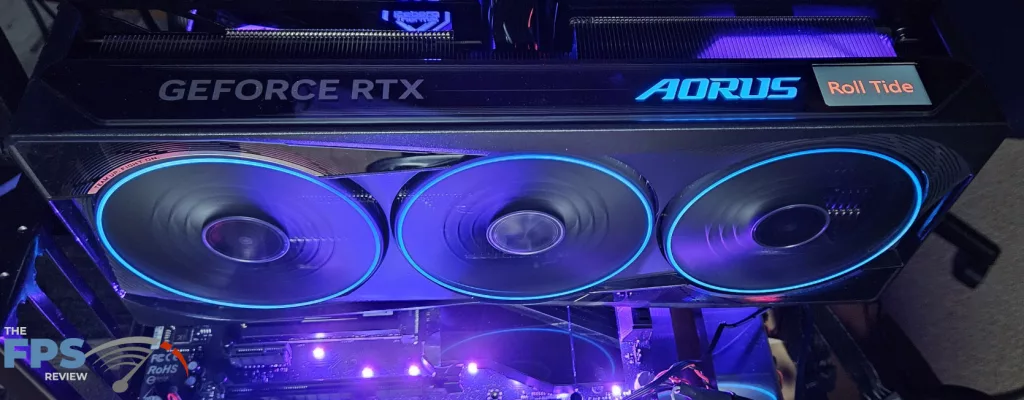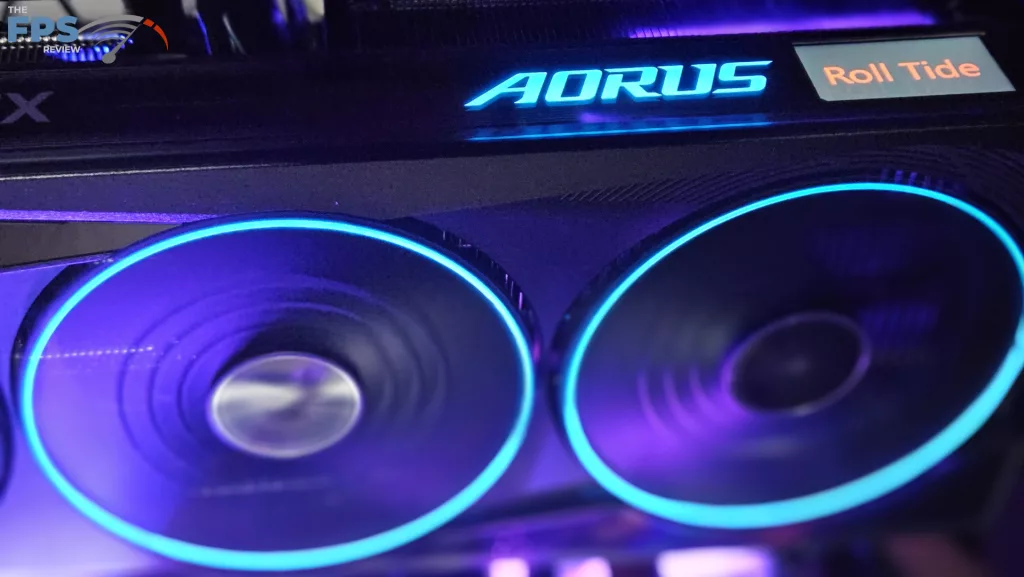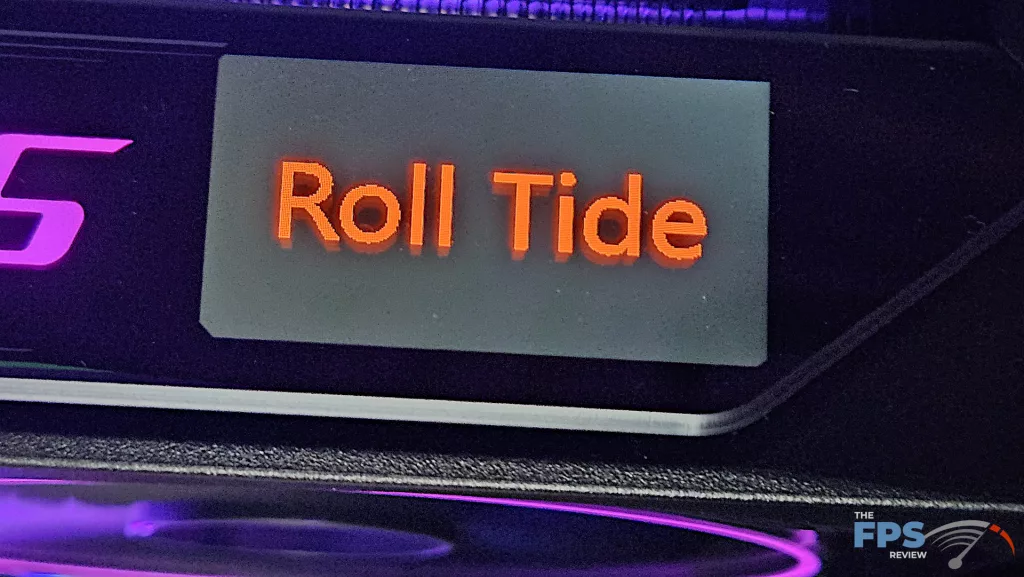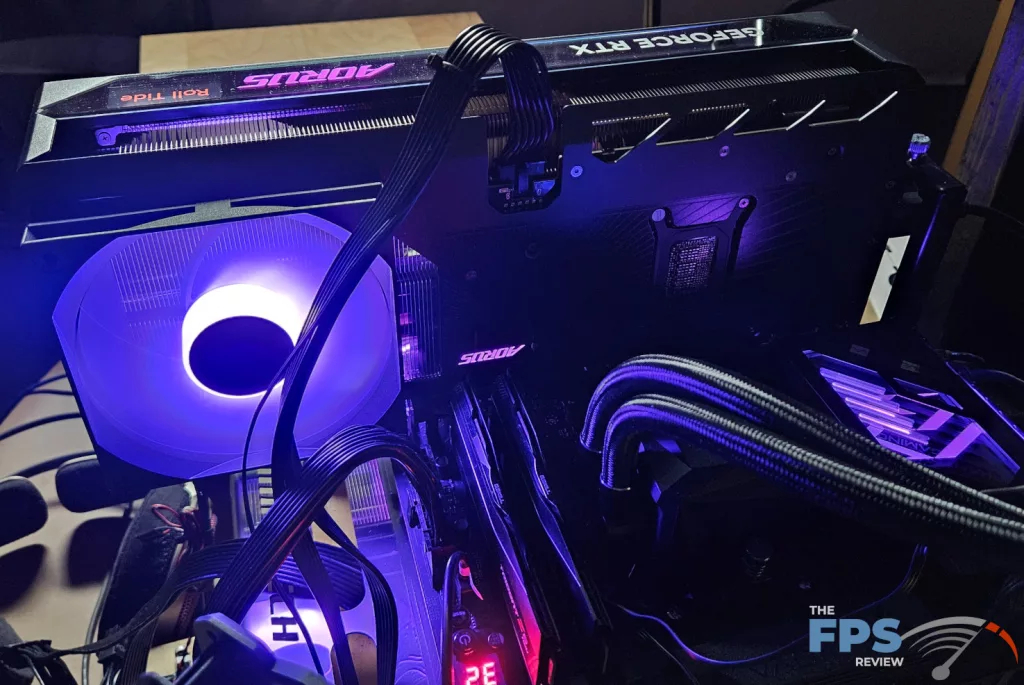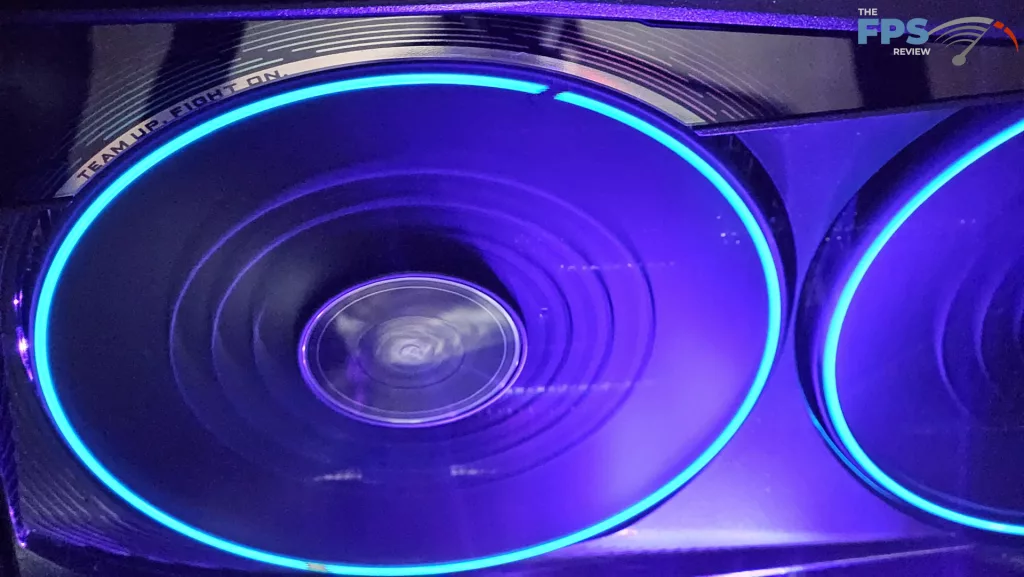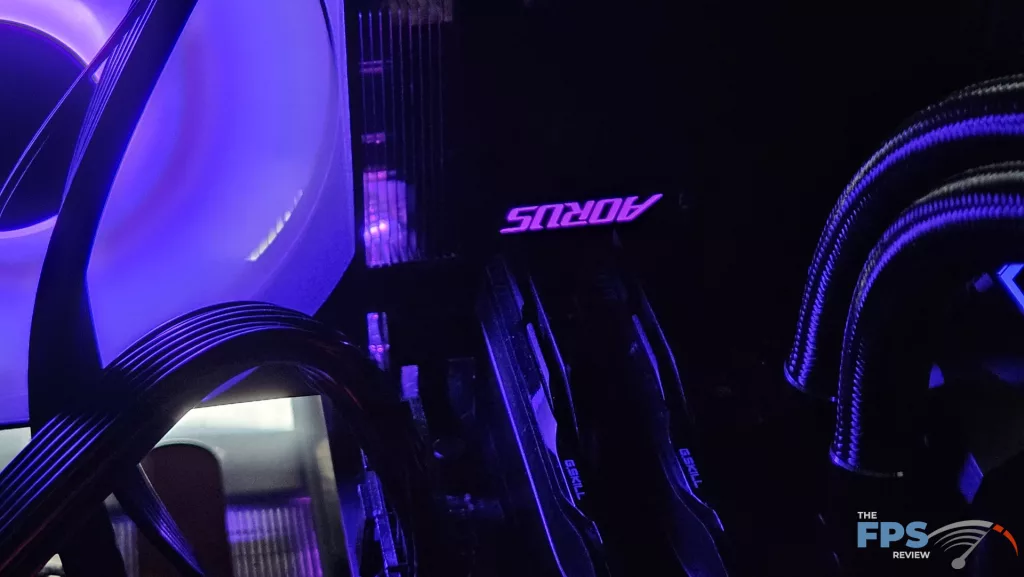
Introduction
GIGABYTE’s AORUS MASTER video card series is a top-end, enthusiast video card series, and we have that model to review today with the GeForce RTX 5080 GPU; this is the cream of the crop, as it were, from GIGABYTE’s lineup. We’ll be reviewing the GIGABYTE AORUS GeForce RTX 5080 MASTER 16G video card today, model GV-N5080AORUS M-16GD, with an MSRP of $1,629.99, it carries a hefty price premium but is also decked out with all the bells and whistles and custom design features from GIGABYTE in a striking design and aesthetic.
The NVIDIA GeForce RTX 5080 was launched on January 29th, 2025, with an MSRP of $999, based on NVIDIA’s new Blackwell architecture. This GB203 chip is just one level down from the GeForce RTX 5090, in the hierarchy, and sports all the same features and 16GB of GDDR7 VRAM on board. Check out our launch review on the GeForce RTX 5080 FE, which goes into detail regarding the engineering specifications of the GPU itself.
Briefly, the NVIDIA GeForce RTX 5080 consists of 7 GPCs, 42 TPCs, and 84 SMs with 128 CUDA Cores per SM. When you add all this up, the NVIDIA GeForce RTX 5080 has 10,752 CUDA Cores, 336 5th Gen Tensor Cores, 84 4th Gen RT Cores, 112 ROPs, and 336 Texture Units. The GPU Boost Clock is set at 2617MHz. Memory consists of 16GB of GDDR7 on a 256-bit memory bus at 30Gbps giving it 960GB/s of memory bandwidth. The TGP (Total Graphics Power) is 360W.

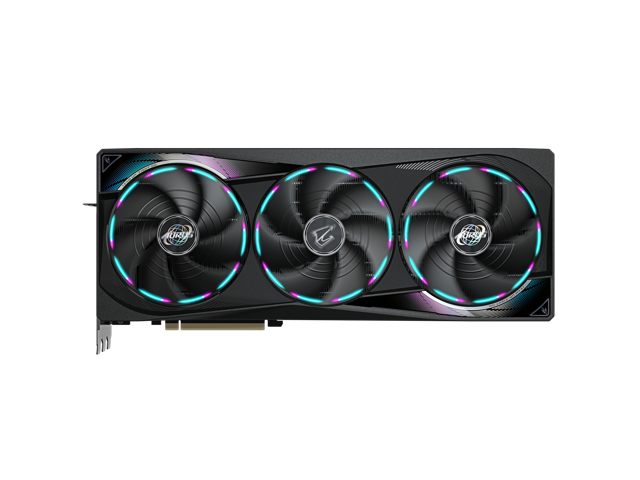
GIGABYTE GeForce RTX 5080 Lineup and AORUS MASTER Features
If you follow GIGABYTE products at all, you already know that the AORUS line of motherboards and video cards is the top-of-the-line, and the MASTER is generally THE top. GIGABYTE has eight offerings in the GeForce RTX 5080 tier: the AORUS XTREME WATERFORCE, the AORUS MASTER (the one we are reviewing), the GAMING OC, the AERO OC SFF, and the WINDFORCE OC SFF and non-OC SFF. The AORUS MASTER also comes in an “ICE” all white version if you so prefer that aesthetic.
All of these video cards have a factory overclock, except the WINDFORCE SFF non-OC version, which is at the stock NVIDIA defaults. Therefore, if you are looking for a GeForce RTX 5080 from GIGABYTE that is just one step down from the AORUS MASTER, then that would be the GAMING OC model, but if you want to go for the gold, that would be the XTREME WATERFORCE versions, either one with a water block or one with a built in AIO. The alternate ICE white versions of the AORUS MASTER and AERO OC SFF are also nice for those builds in mind.
Our AORUS MASTER comes from the factory overclocked and is literally stuffed with extras, some you see and some you don’t. To start with, the default NVIDIA Boost clock on the GeForce RTX 5080 is 2617MHz, while our AORUS MASTER has a Boost Clock set at a high 2805MHz, an overclock of 7%. This is also the highest factory overclock GIGABYTE provides on the GeForce RTX 5080, as even the XTREME WATERFORCE is clocked at 2805MHz, so you are getting the most with the AORUS MASTER.
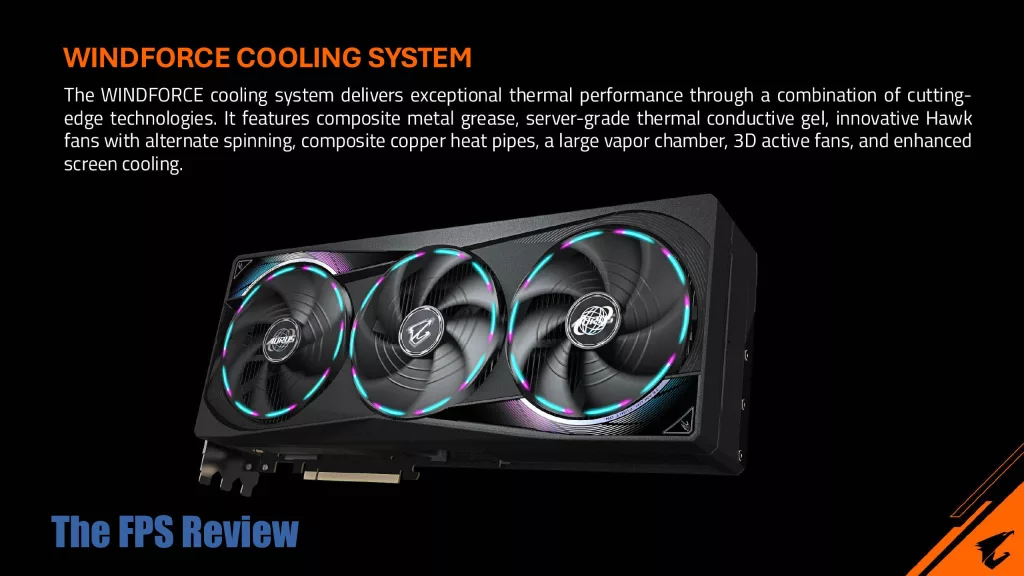
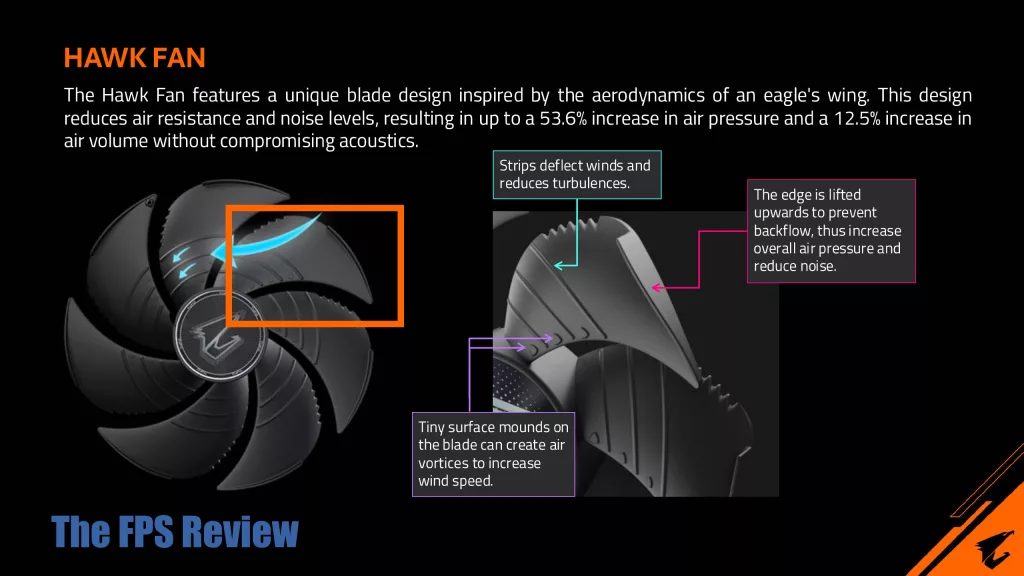
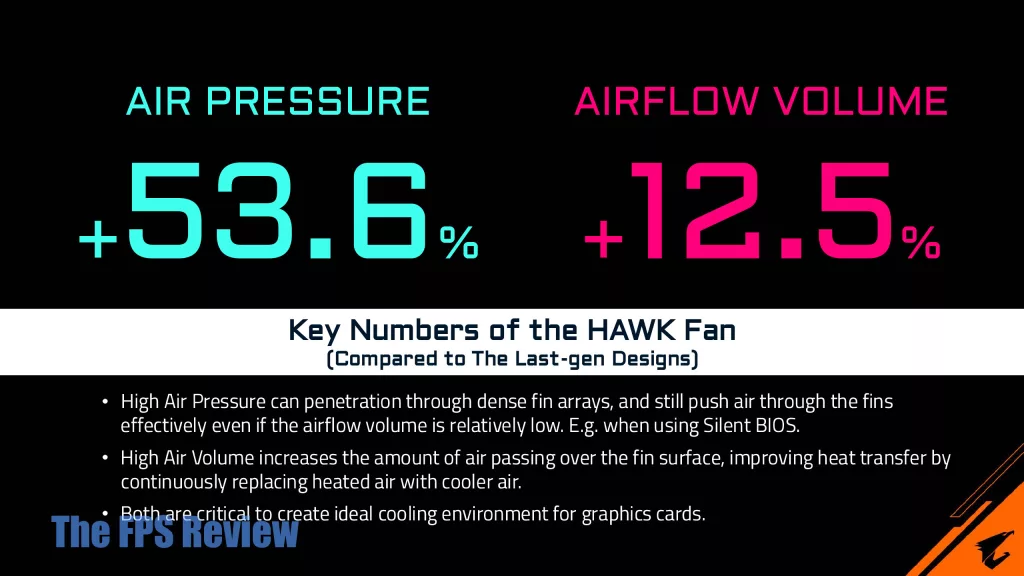
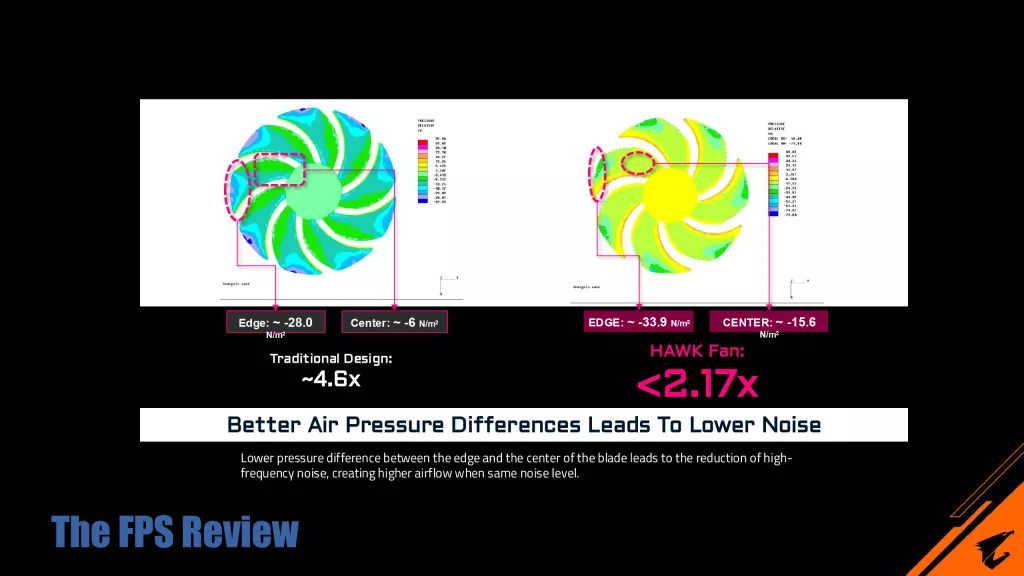
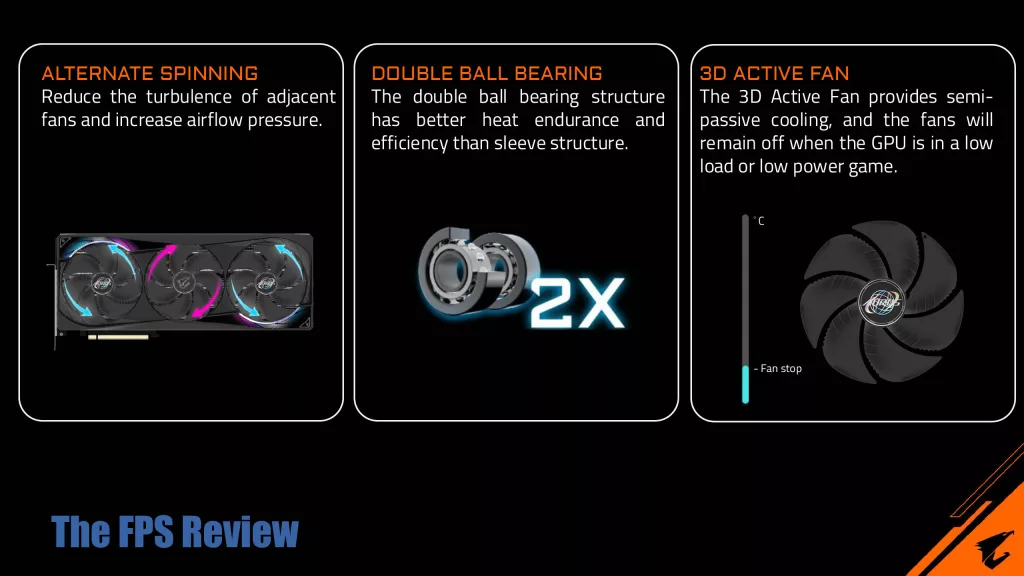
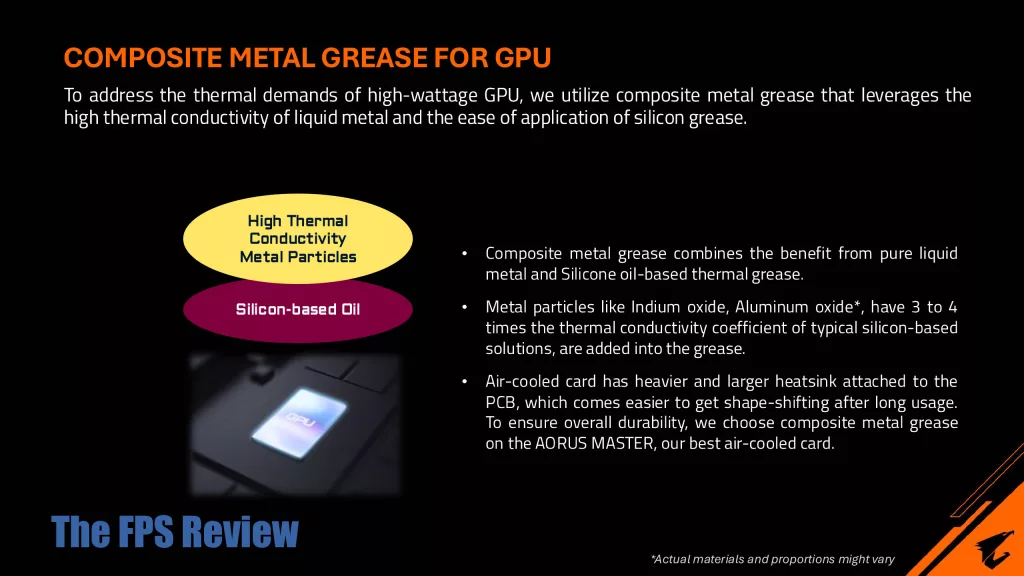
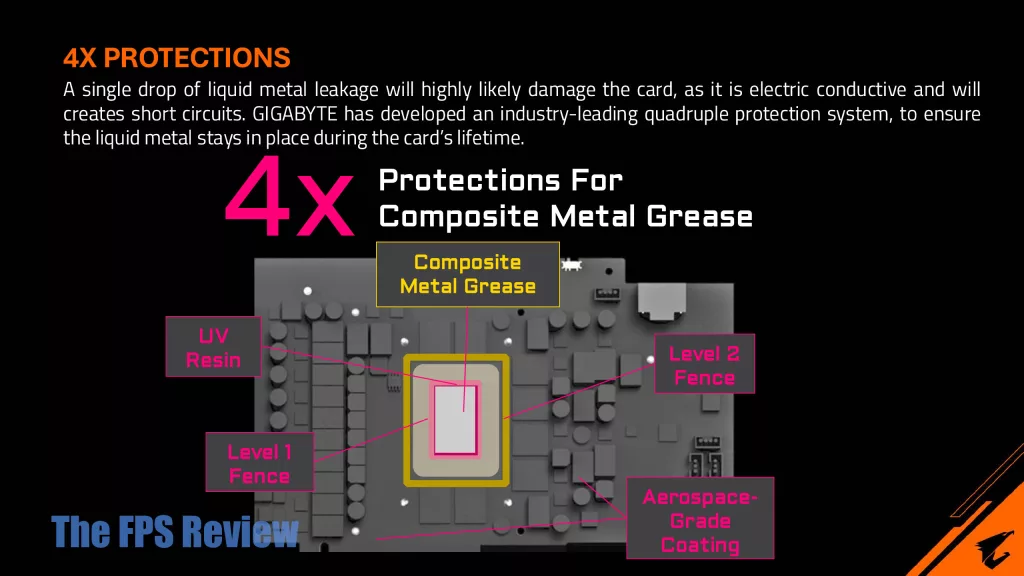
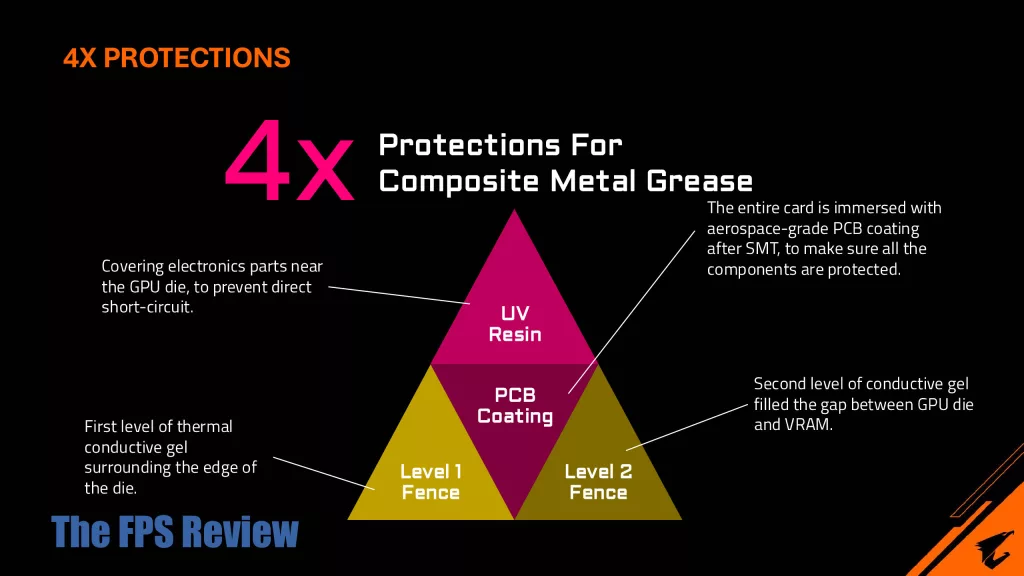
If you like RGB, you won’t be disappointed here with GIGABYTE RGB HALO. Not to mention, there is a 40x20mm programmable LCD screen on the top edge. What you don’t see is the attention to cooling that GIGABYTE has engineered into the design of the AORUS GeForce RTX 5080 MASTER, more on that as we go along. What you do see and feel is a really big, premium-built video card with a massive heatsink.
The GIGABYTE AORUS GeForce RTX 5080 MASTER 16G is based on GIGABYTE’s WINDFORCE cooling system, and features GIGABYTE’s composite metal grease, which is unique to certain series of GIGABYTE video cards, including the AORUS MASTER. GIGABYTE also uses thermal grade conductive gel for the other components, and its Hawk fan design with alternate spinning fans, composite copper heat pipes and a large vapor chamber, and screen cooling. The Hawk fan design features a unique blade design with strips, lifted edges, and surface bumps, all designed to increase air pressure and increase air volume without compromising acoustics. The fans are also double ball bearings for better efficiency and longevity, and they turn off at cooler temperatures.
The composite metal grease is a unique thermal conductivity method that has the high thermal conductivity of liquid metal, but with the ease of application of silicon grease, it’s a great in-between medium. The grease includes the components of Aluminum oxide and Indium oxide, which is liquid metal, to help with the thermal conductivity. To protect the GPU and video card, GIGABYTE has a 4x protection scenario including a two-layer fence around the GPU to contain the thermal grease, UV resin, and an aerospace-grade coating on the PCB to protect components against shorting.
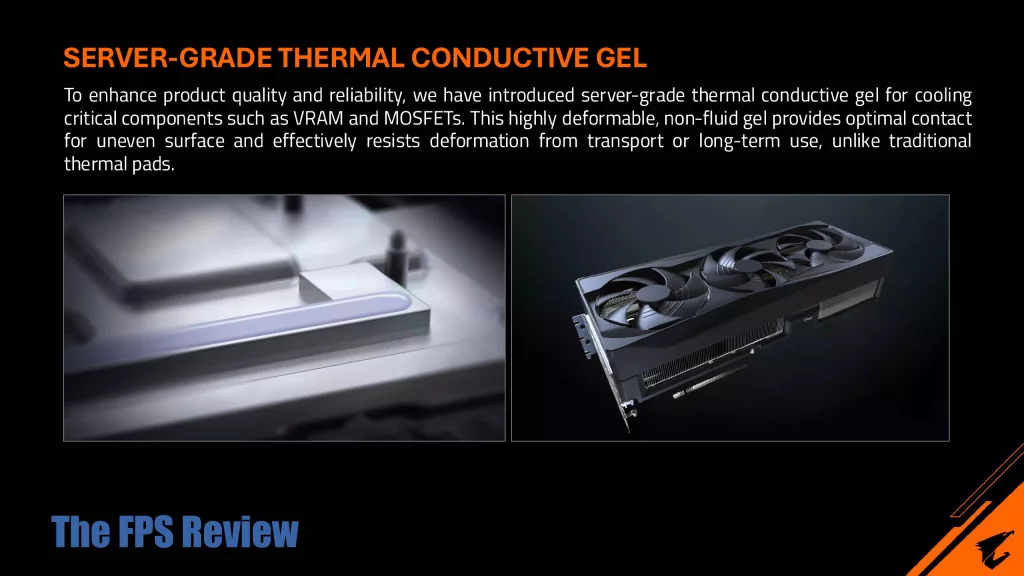
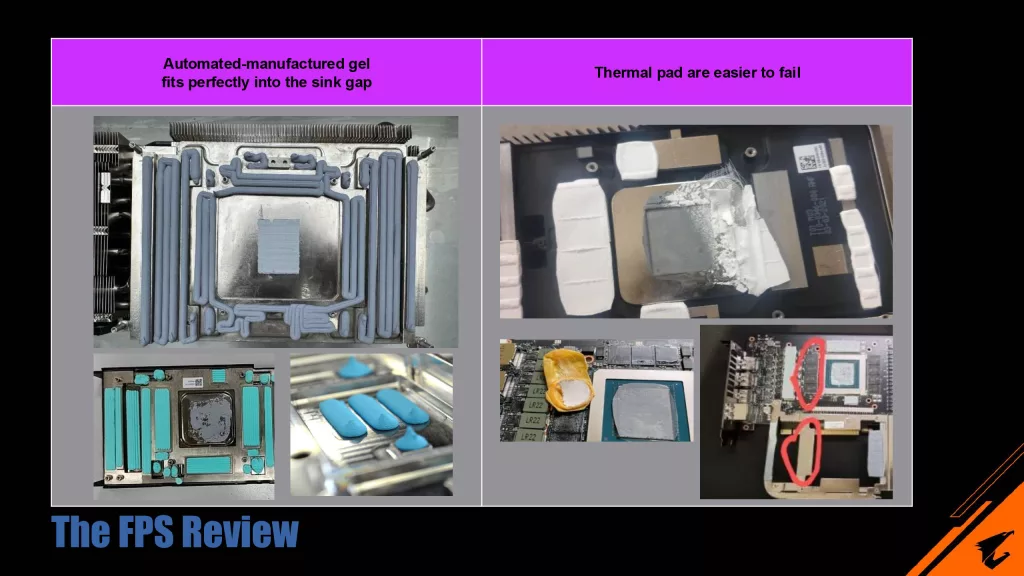
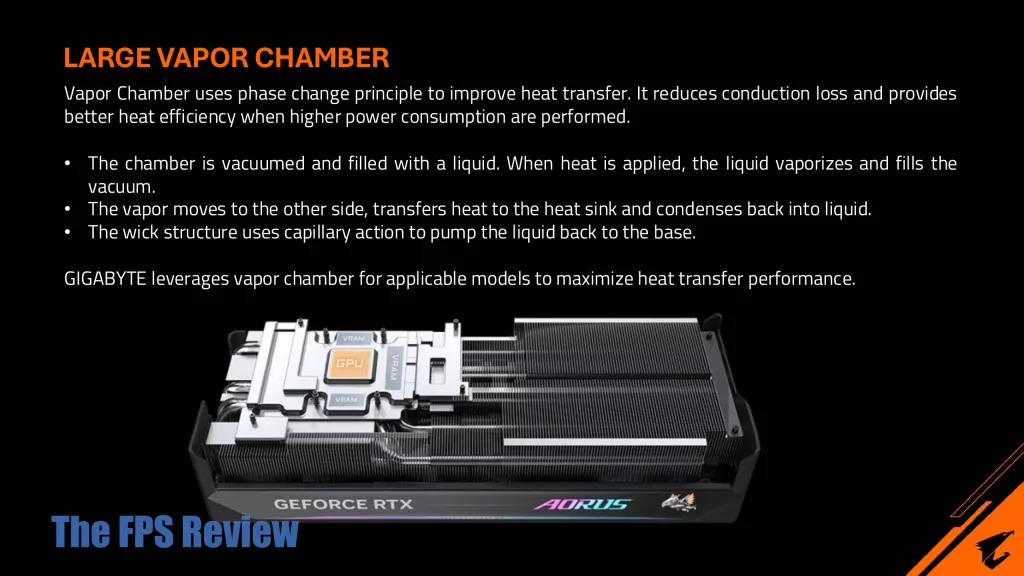
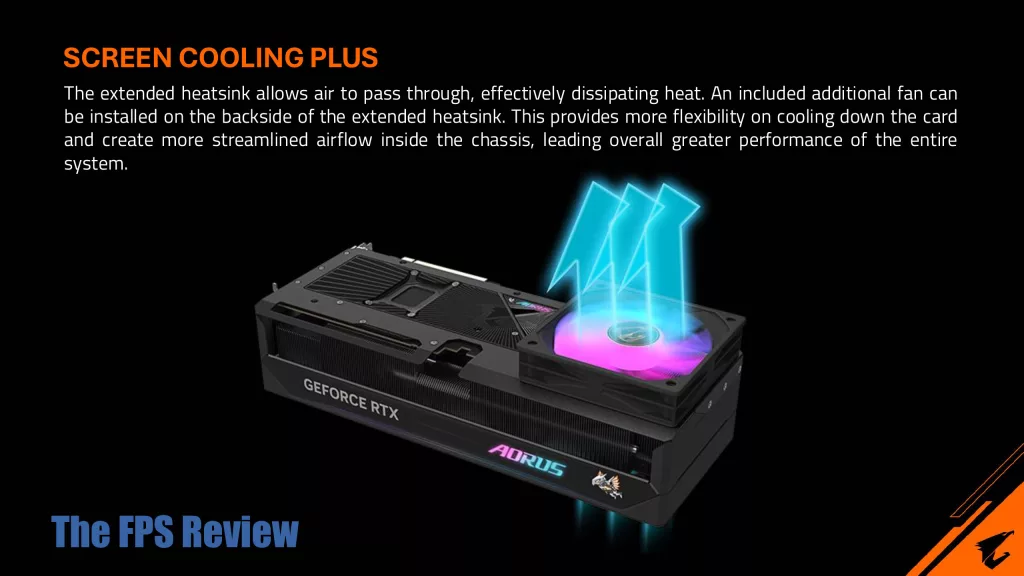
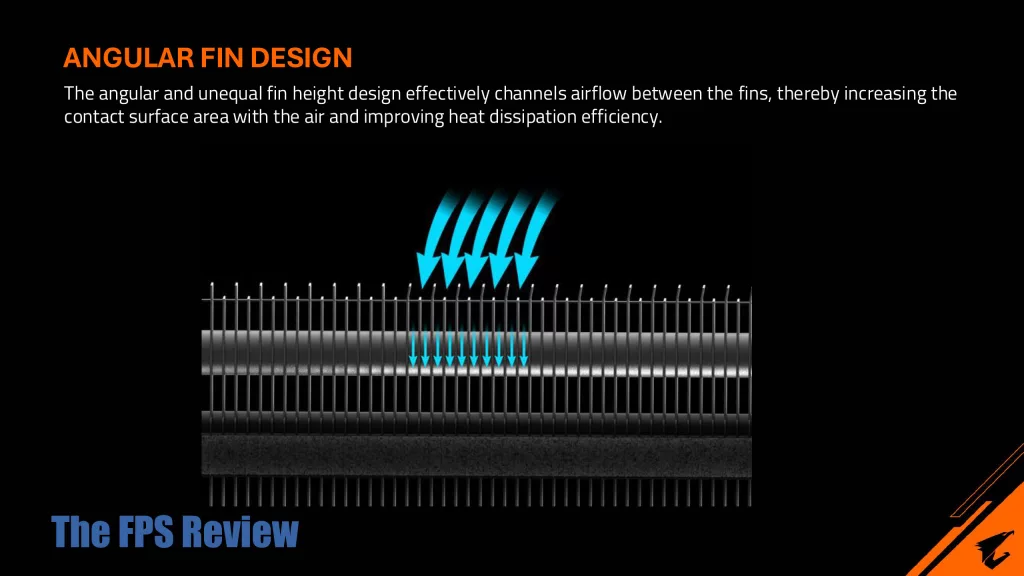
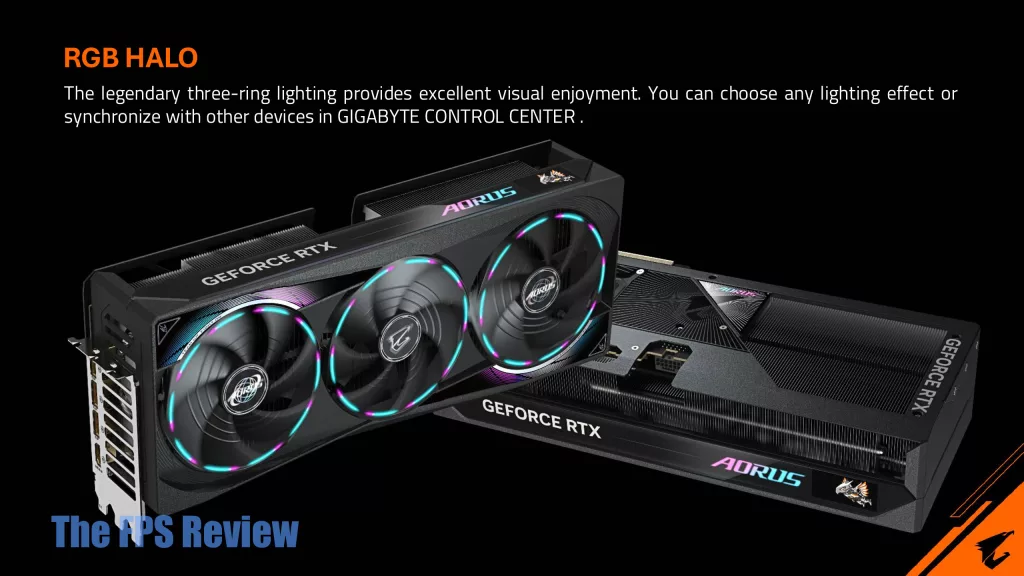
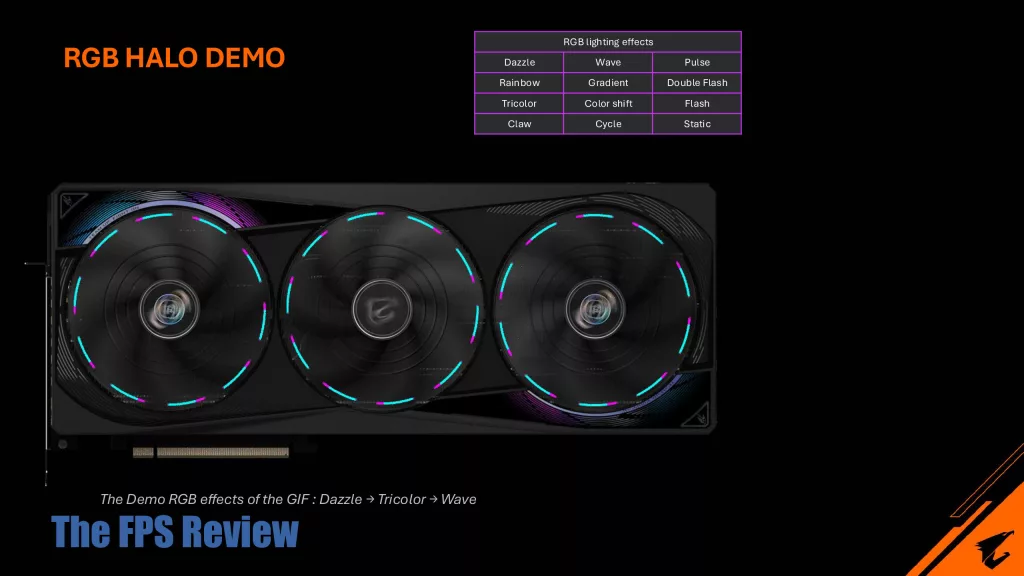
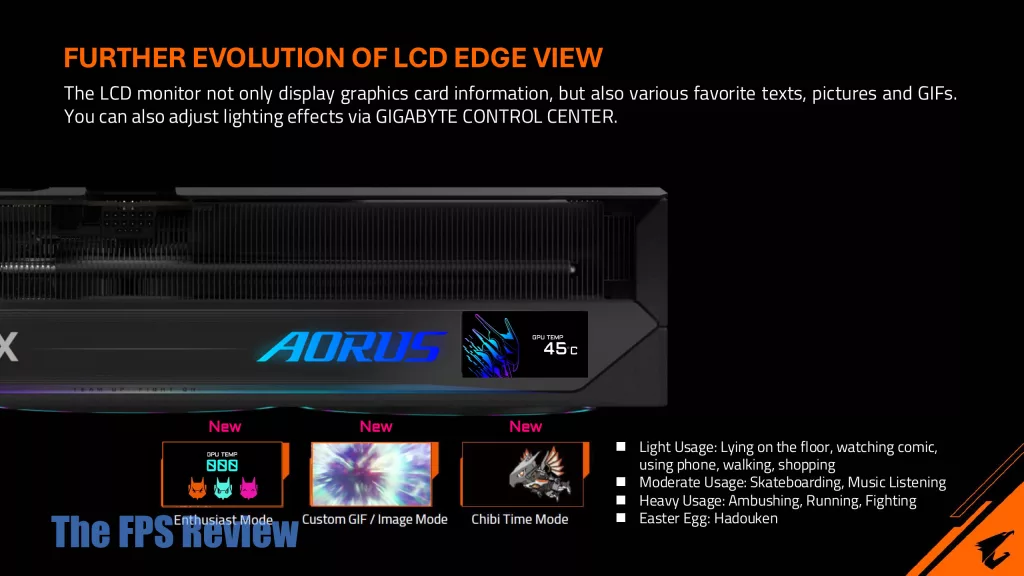
For the other components, a server-grade thermal conductive gel is used for cooling components such as VRAM and MOSFETs. It’s a highly deformable, non-fluid gel that provides optimal contact with the components better than thermal pads, and resists deformation. A large vapor chamber is used for cooling and makes direct contact with the GPU and VRAM, and MOSFETs. The video card also uses screen cooling which extends the heatsink past the PCB to allow air to pass through.
In addition, uniquely, with the AORUS MASTER models, you get an additional 120mm fan that can be installed on the backside of the extended heatsink screen cooling area. This provides flexibility and extra cooling options, we’ll take a look at this later in the review. The heatsinks fins are angular in design to channel airflow between them better.
The GIGABYTE AORUS GeForce RTX 5080 MASTER 16G also features the GIGABYTE LCD EDGE VIEW monitor. This LCD monitor displays graphics card information as well as various texts, pictures, and GIFs that you can customize via the GIGABYTE Control Center. This LCD is very handy for monitoring GPU temps.

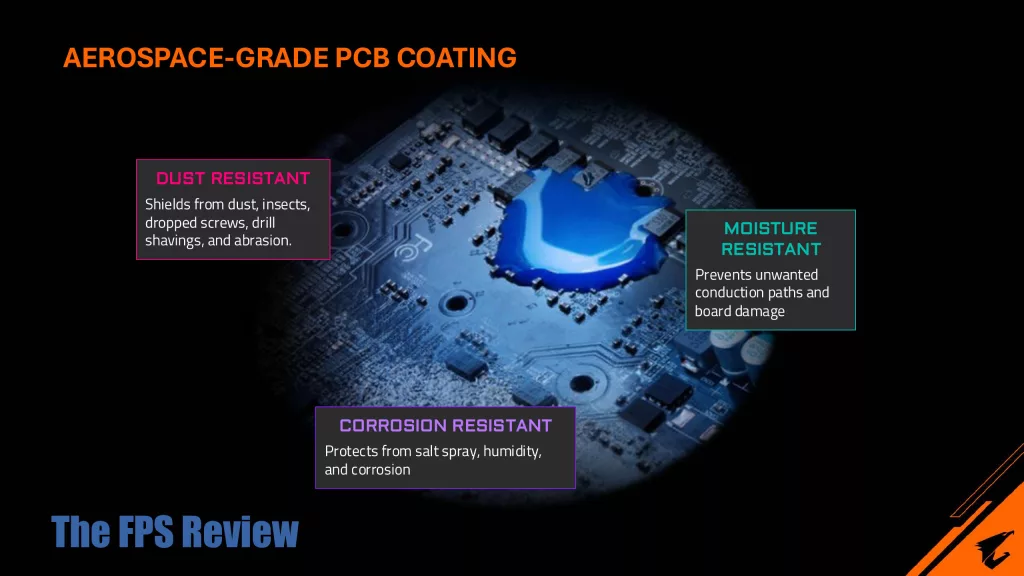
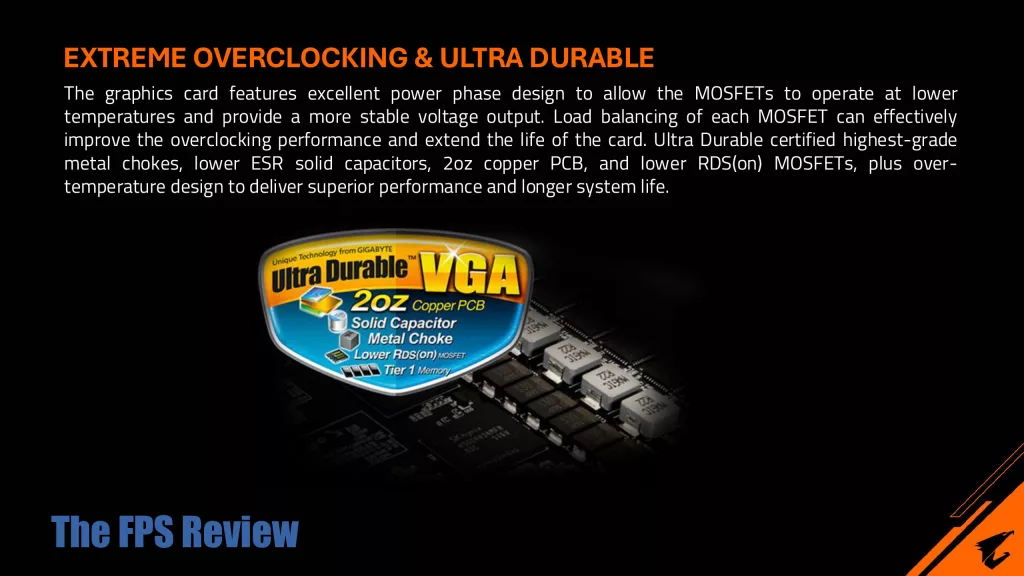

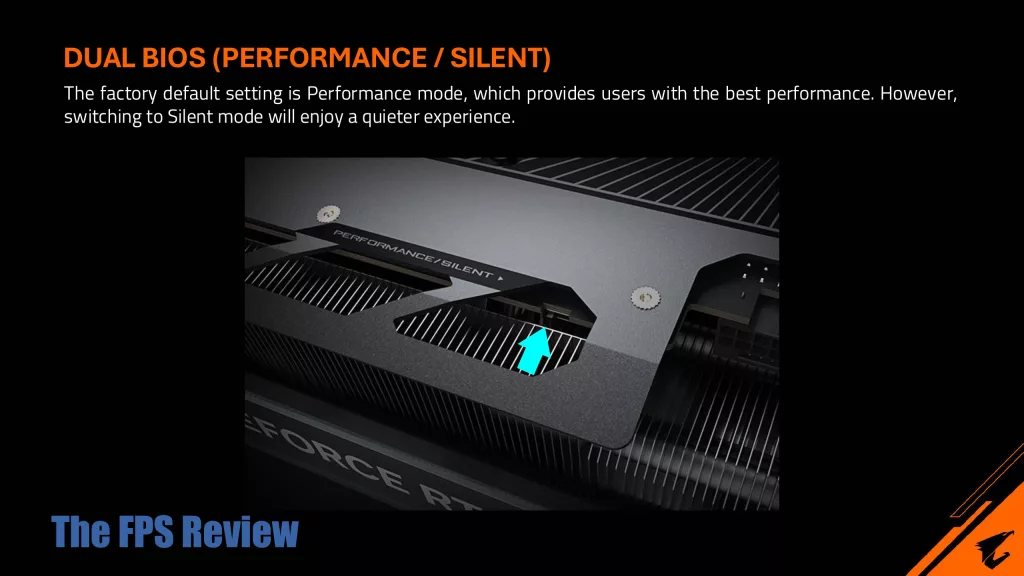
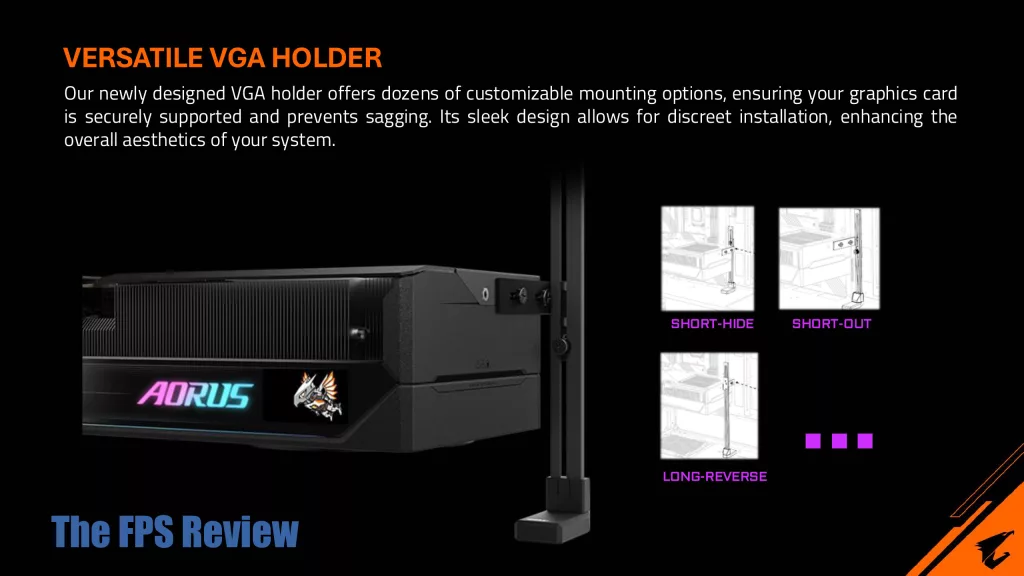
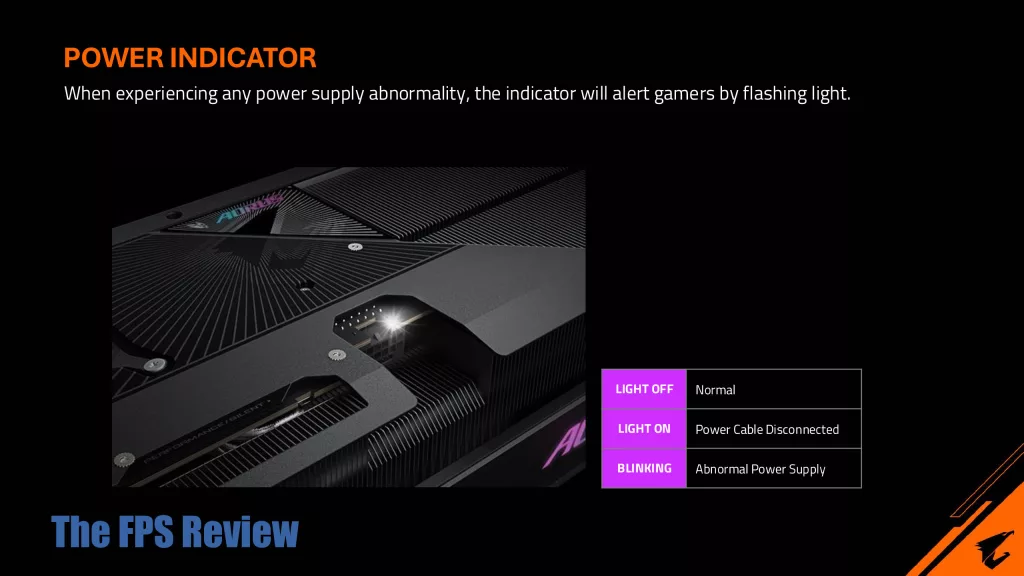
The GIGABYTE AORUS GeForce RTX 5080 MASTER 16G also utilizes a reinforced structure with a metal backplate with bent edges and is securely fastened to the I/O bracket. The aerospace-grade PCB coating protects the PCB from dust, moisture, and corrosion. The GIGABYTE AORUS GeForce RTX 5080 MASTER 16G features GIGABYTE’s Ultra Durable VGA technologies, which include the 2oz copper PCB, Solid Capacitor, Metal Choke, and power delivery.
The video card also has a DUAL BIOS for performance and silent mode, with the default factory setting being performance mode. GIGABYTE’s temp readings in performance mode are 58.5c and acoustics at 33.2db, while in silent mode it is 63.6c at 31db. The GIGABYTE AORUS GeForce RTX 5080 MASTER 16G also has a power indicator on the 12VHPWR connector that indicates whether the cable is disconnected, has an abnormal power supply, or is in a normal state.
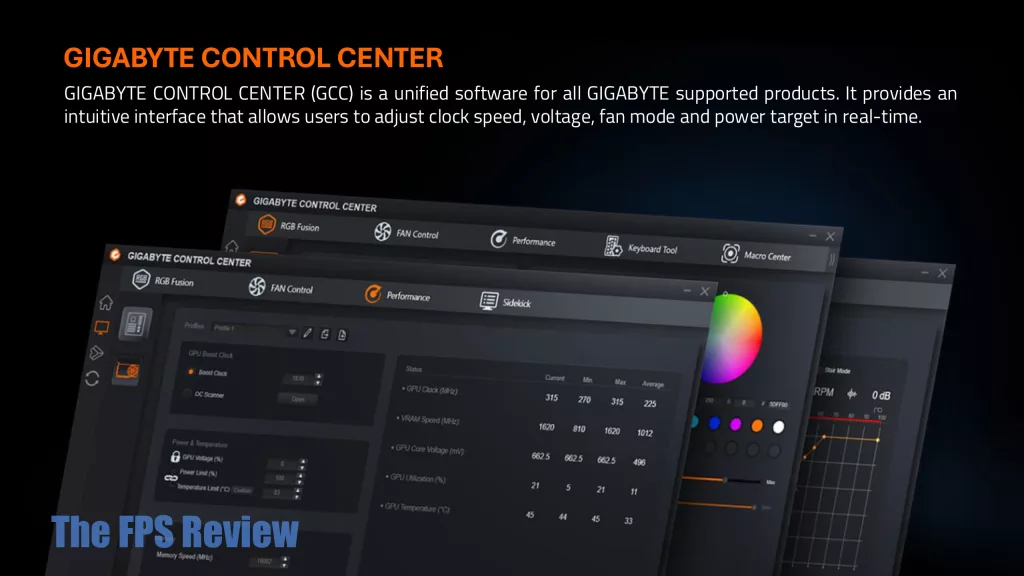
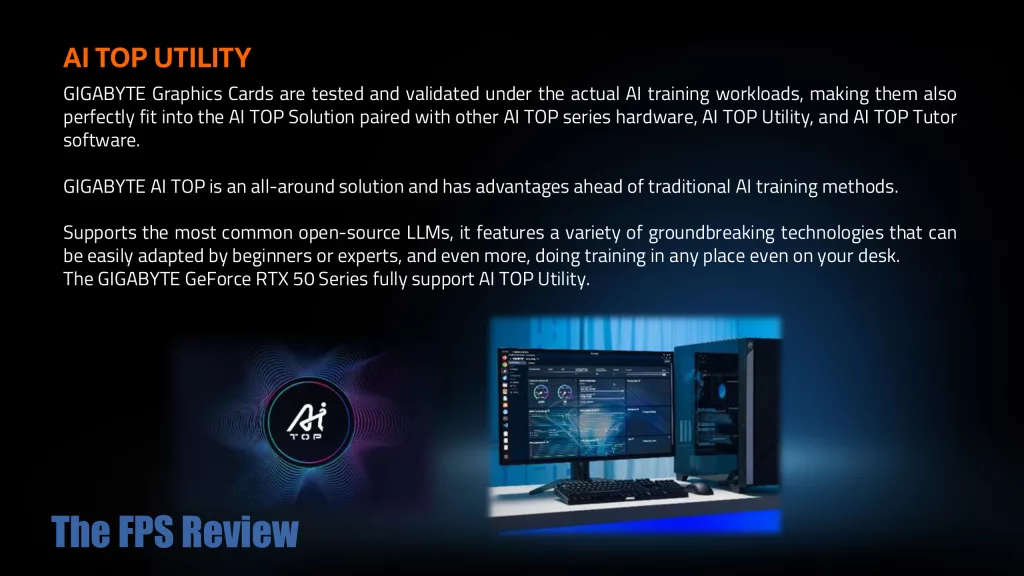
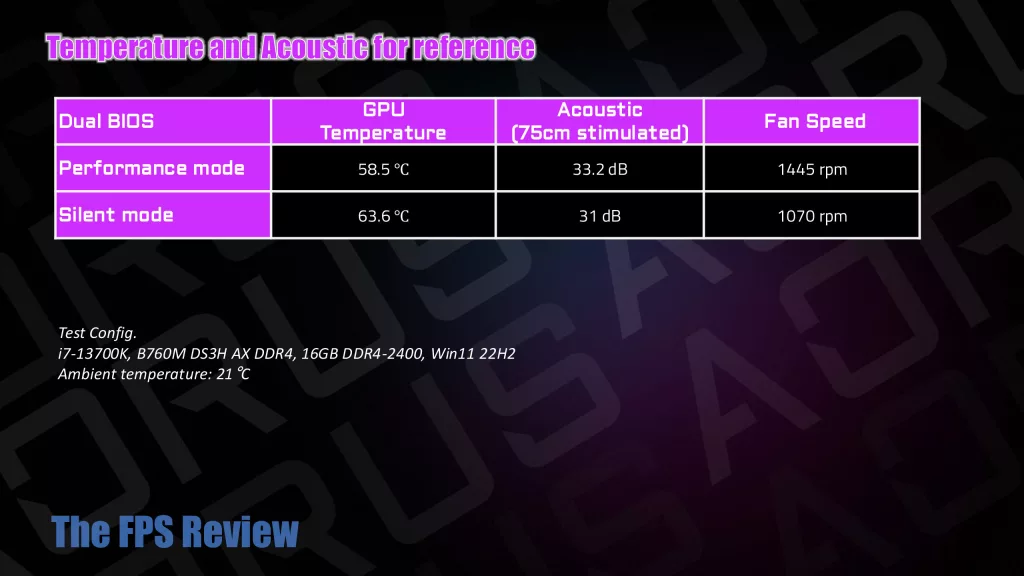
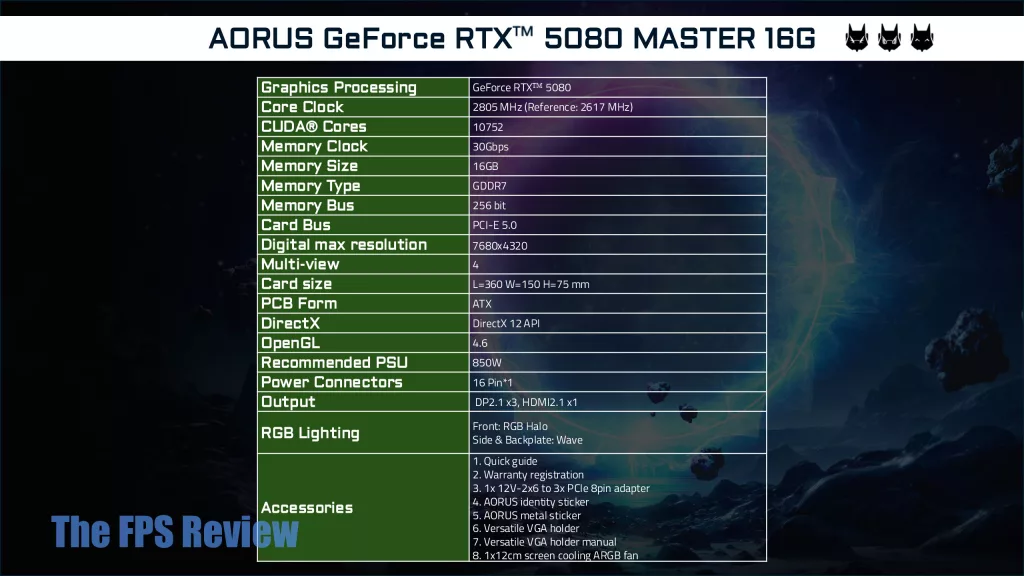
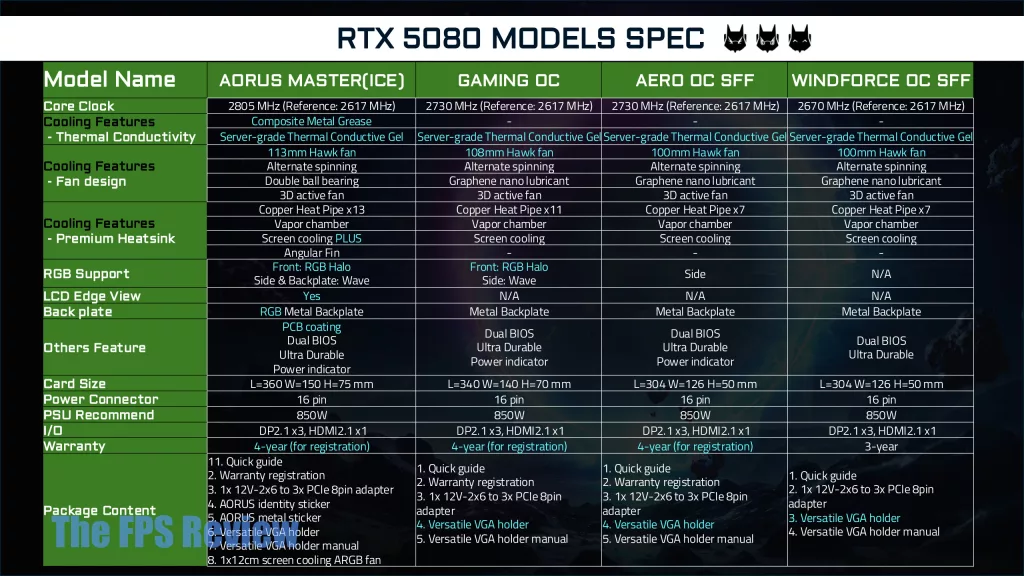
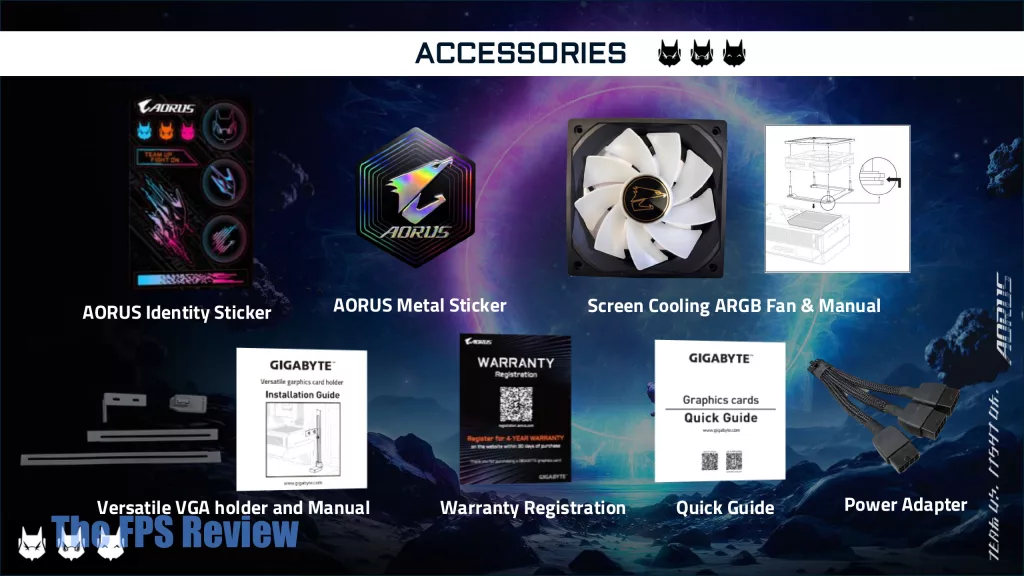
GIGABYTE’s Control Center is a software app where all of the features, including overclocking and fan control, and RGB, are handled, as well as the LCD screen. At the time of writing, these video cards are pretty hard to find in the regular retail stores and websites, the prices seem to change on a near-weekly basis. The GIGABYTE AORUS GeForce RTX 5080 MASTER (GV-N5080AORUS M-16GD) has a listed price of $$1,629.99 and carries a 4-year warranty if registered with GIGABYTE.
GIGABYTE AORUS GeForce RTX 5080 MASTER 16G Features and Photos
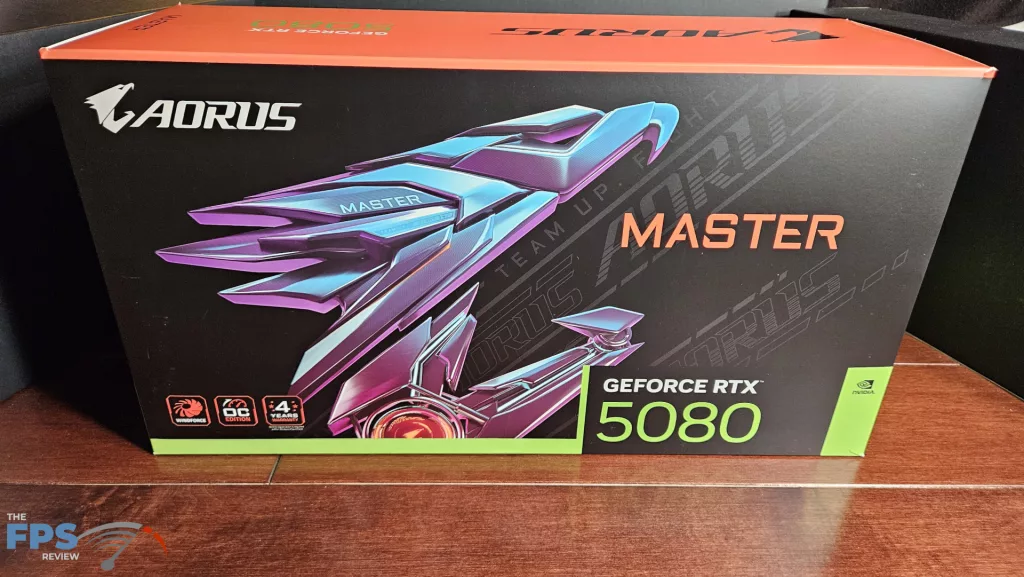
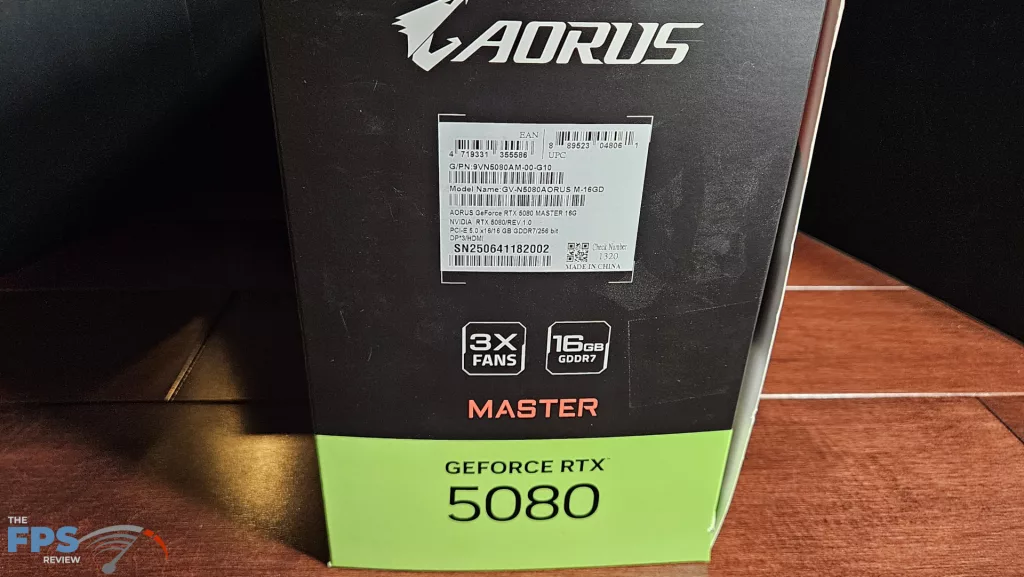
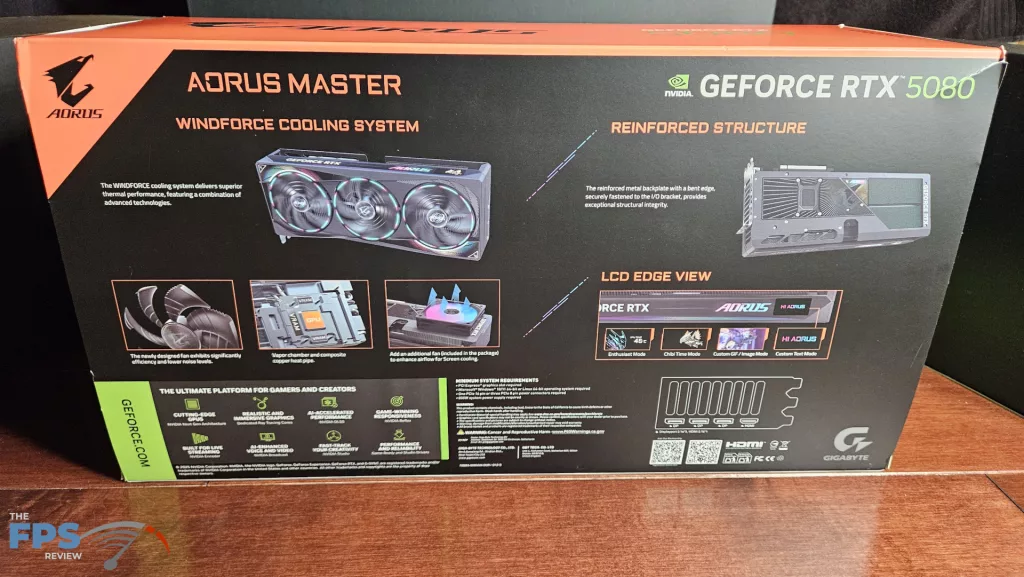
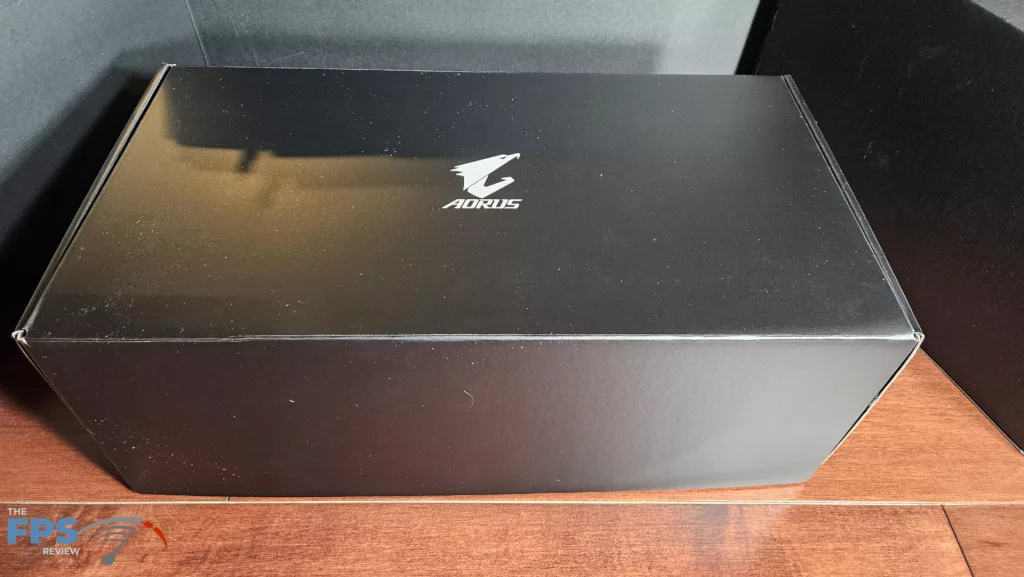
The GIGABYTE AORUS GeForce RTX 5080 MASTER was sent directly from GIGABYTE. The package was a full retail offering; however, this model has traveled around to a few other reviewers before us, therefore some of the detailed photographs may show some markings that a brand new card would not.
Overall, this is a big package. The inside box is quite large and is separated into three layers, which reflects the premium design of the video card. The top foam layer has a square envelope that contains warranty information and assembly instructions. Beneath that are housed all the accessories, which include: case badge, three-headed 12V 2+6 power adapter, video card stand, and a 120mm ARGB “Screen-Cooling” fan, which may be placed on the backplate for extra cooling if desired. More on that later. Finally, in the lower foam portion is the video card itself wrapped in an anti-static bag.
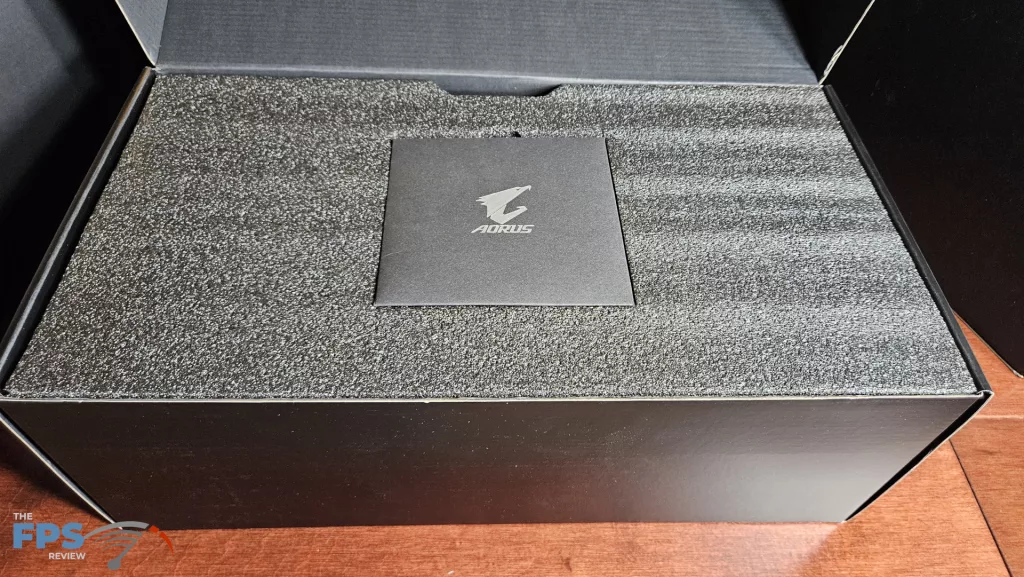
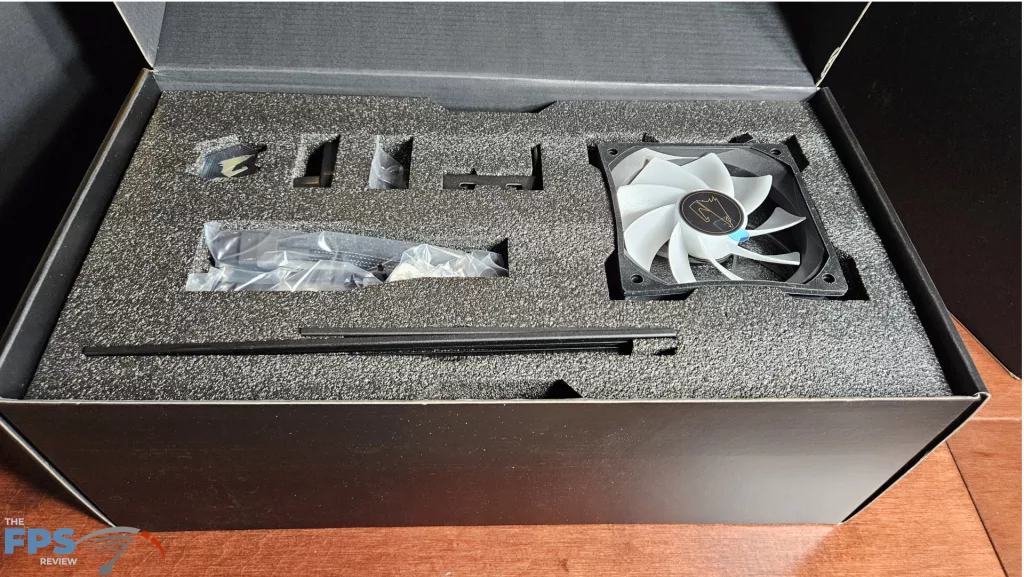
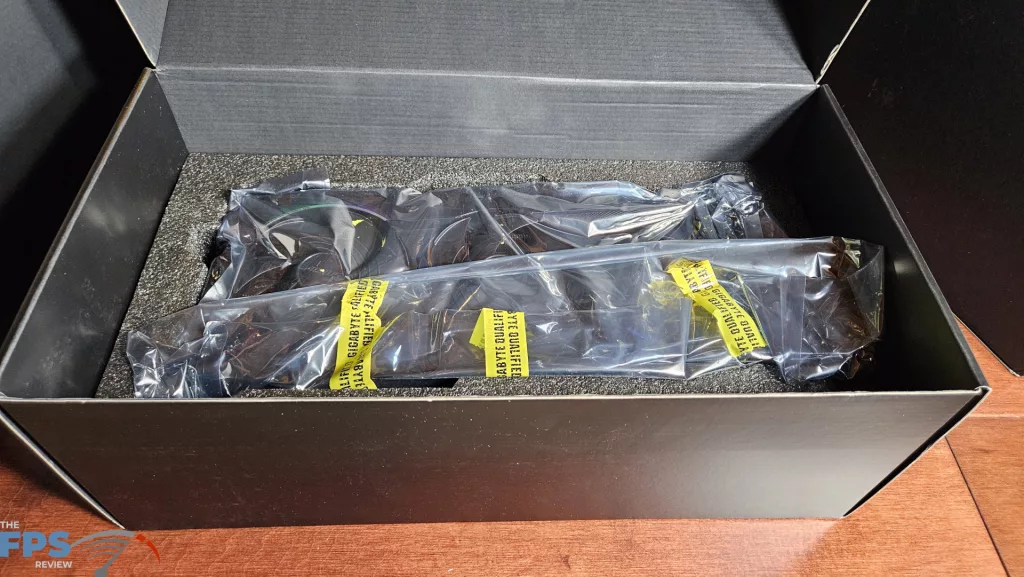
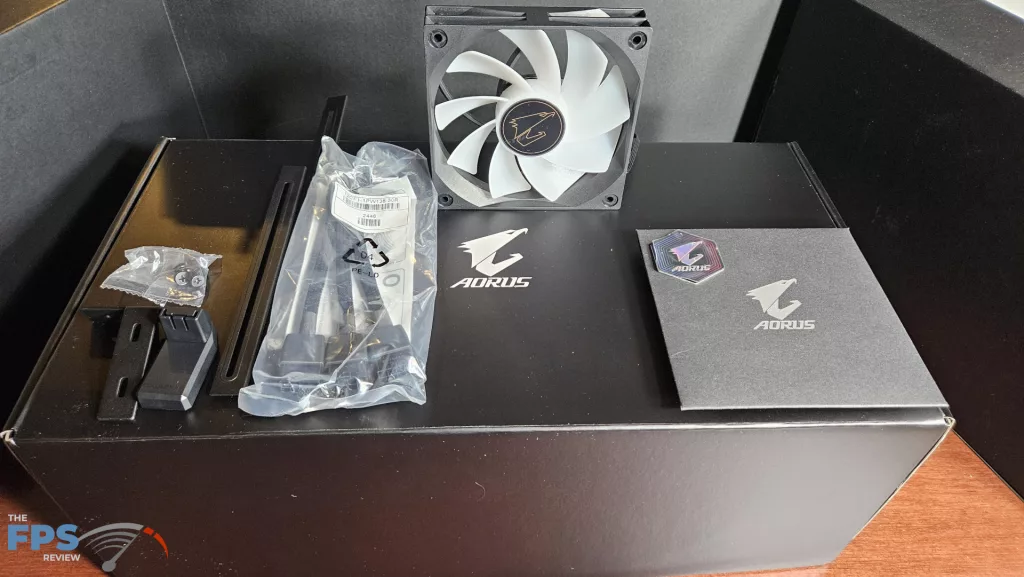
We introduced the design and engineering in the paragraphs above. After you take the video card out of the box, you understand how all this fits (literally). The video card is massive, measuring 360mm in length (14.1 in), 150mm (5.9 in) in width, and 75mm (2.9 in) in height. It actually makes my personal RTX 4090 look small by comparison. The heatsink on the GIGABYTE AORUS GeForce RTX 5080 MASTER is huge. A close look tells you the PCB is about half the total length of the shroud, and the rest is all heatsink.
GIGABYTE uses an Ultra Durable PCB design and coats it after assembly. The heatsink is a vapor chamber with heatpipes passing through an angular-fin design, which maximizes air flow and heat dissipation. GIGABYTE feels this is its best air cooling design to date. The shroud on top is a textured plastic with three 110mm “Hawk” fans. The center spins opposite the outer fans. These Hawk fans are quite uniquely designed with raised edges, blades with surface dimples and raised strips, all there to maximize airflow and reduce noise. The backplate is a powder-coated metal with a large opening at the far edge. The backplate is designed for rigidity while accommodating the extra 120mm fan if you wish to place it. GIGABYTE calls this Screen-cooling.
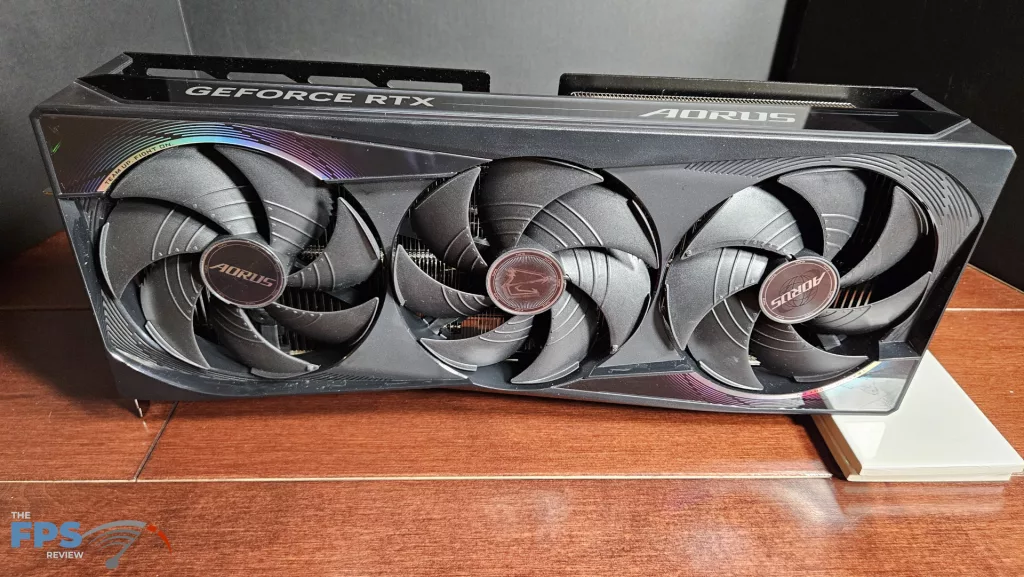
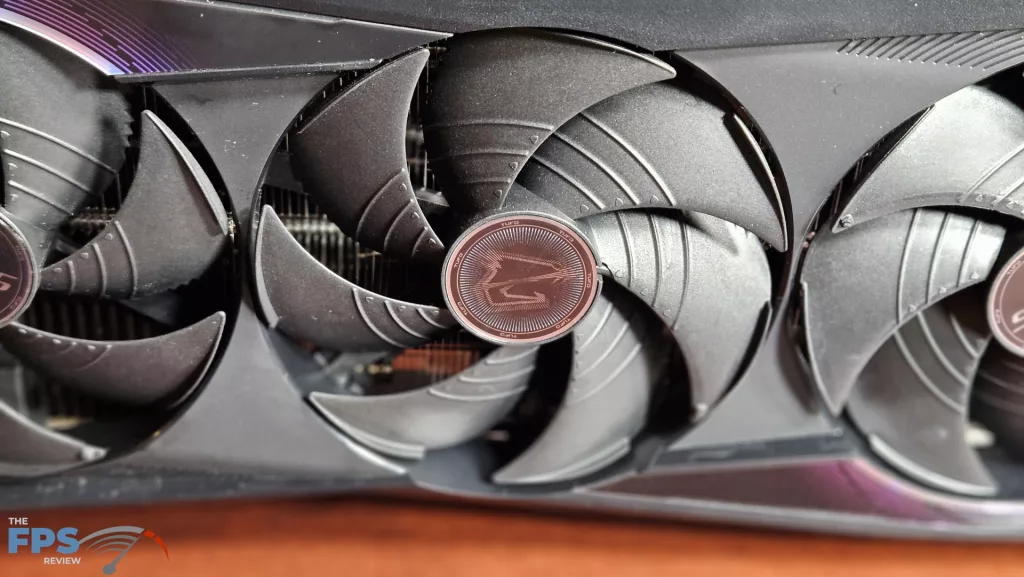
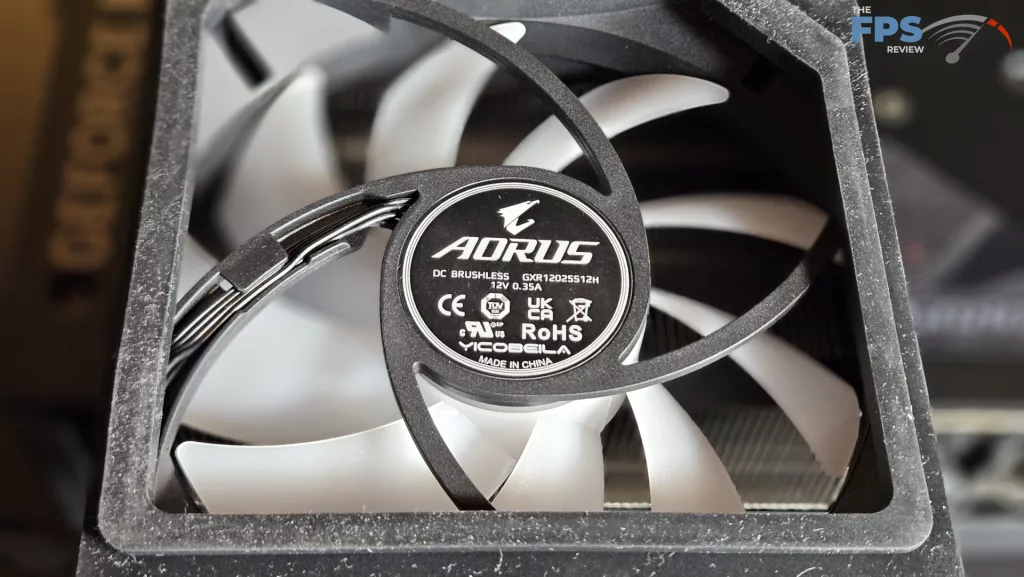
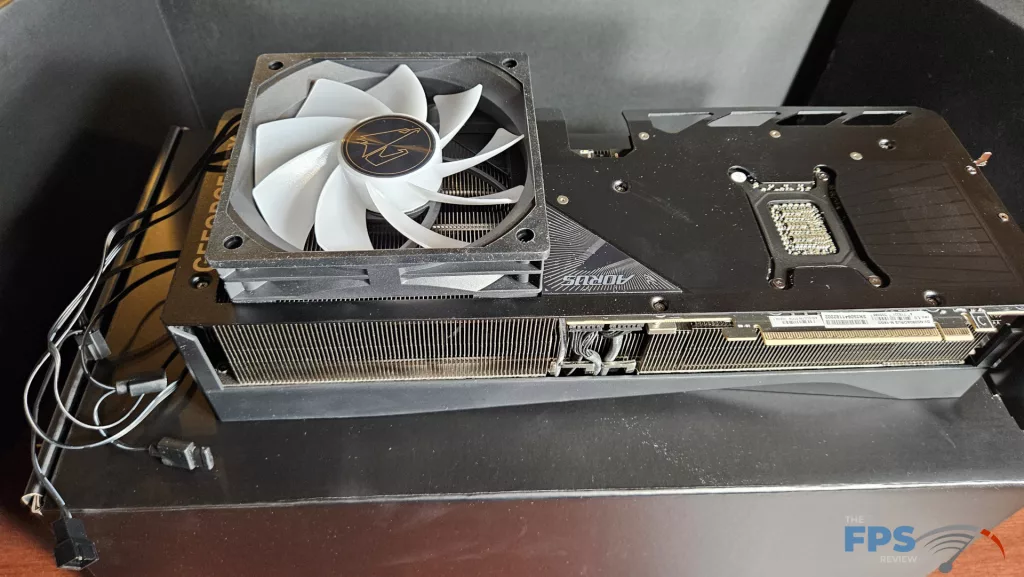
Now, what you can’t see unless you were to disassemble the card. GIGABYTE has paid quite a bit of attention to cooling this video card, as you can already see. To take this further, they have applied a composite metal grease to the GPU and thermal gel to the remainder of the memory and VRM areas, rather than using thermal pads. Their thermal gel is applied by an automated process for uniformity. This whole process is engineered to provide maximum thermal conductivity.
The video card also comes equipped with a dual BIOS switch. This applies only to fan profiles and does not affect clock performance. The card arrived in the default “performance” mode. Just beneath the 12V 2+6 connector is a series of LEDs. These will light up if there is a power issue, such as an incorrect or misaligned connection or inadequate power. A nice touch.
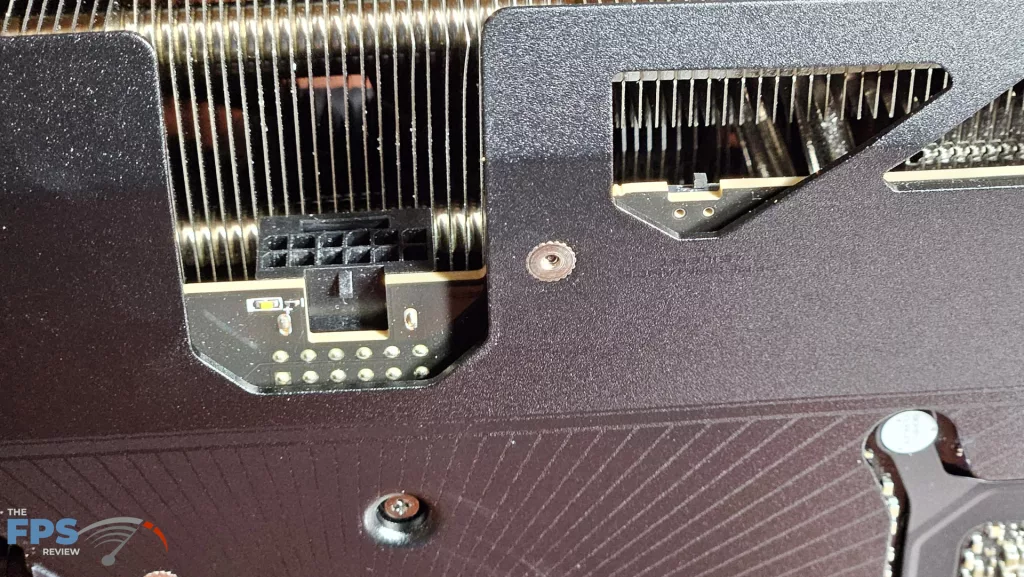
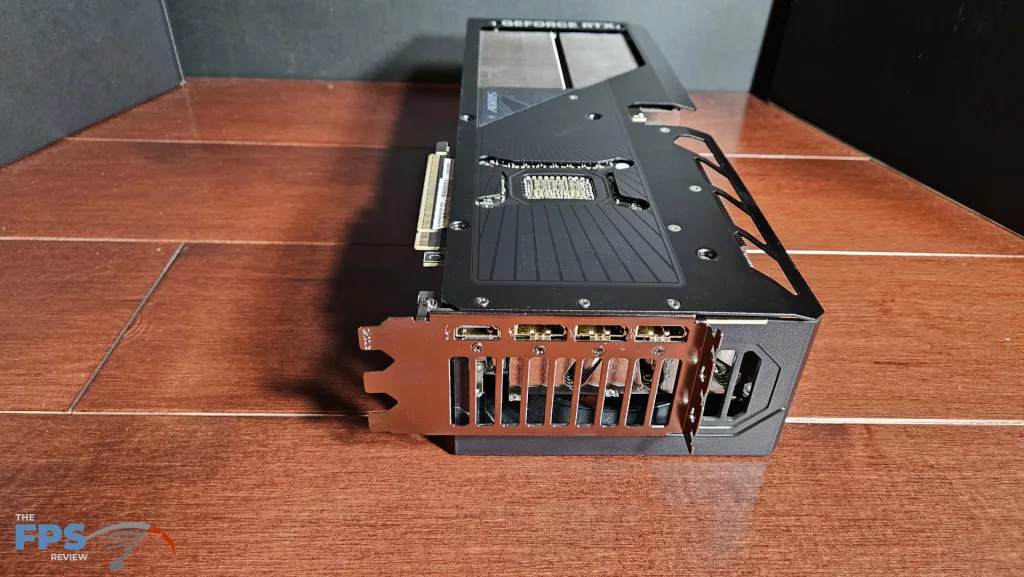
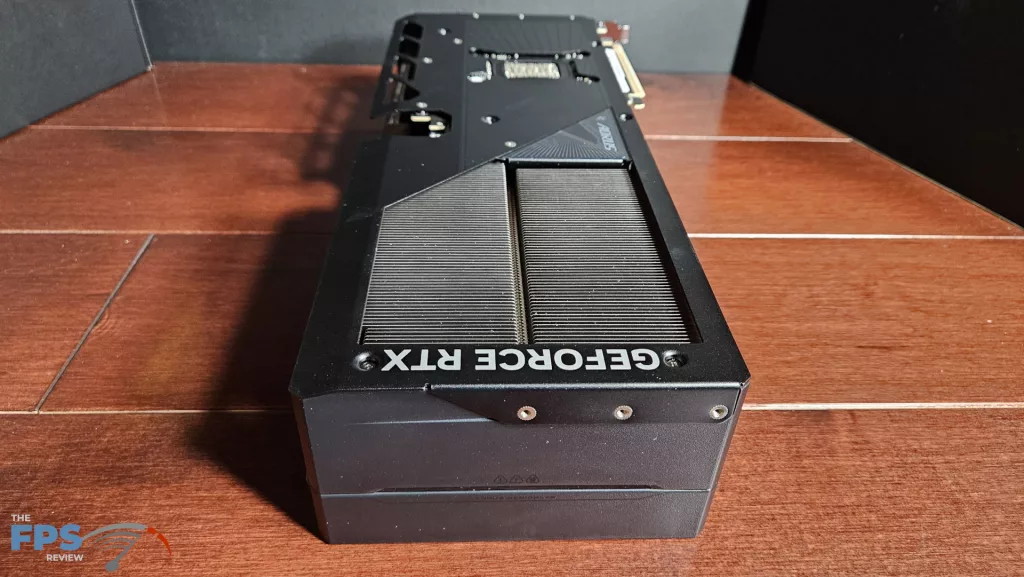
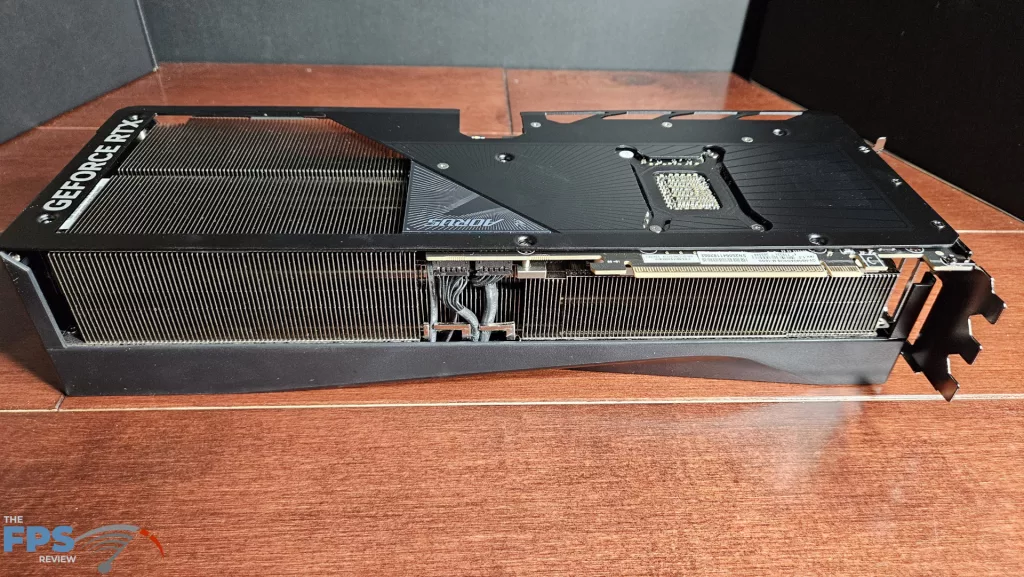
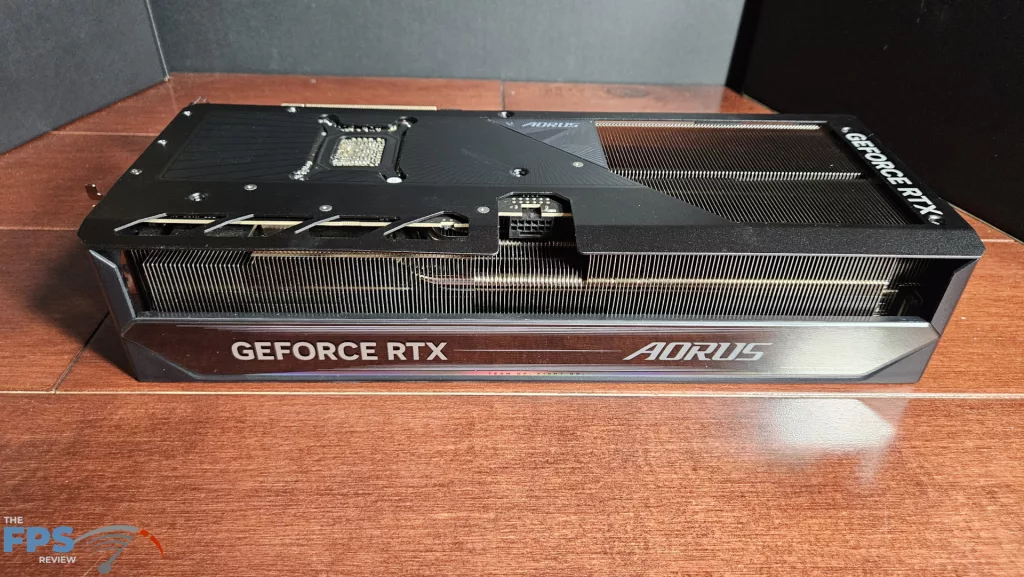
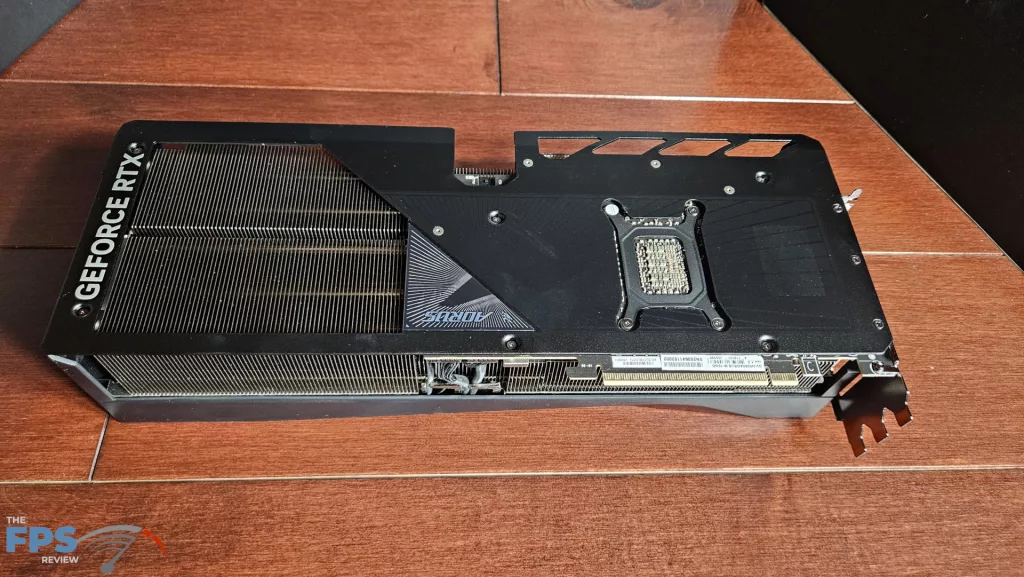
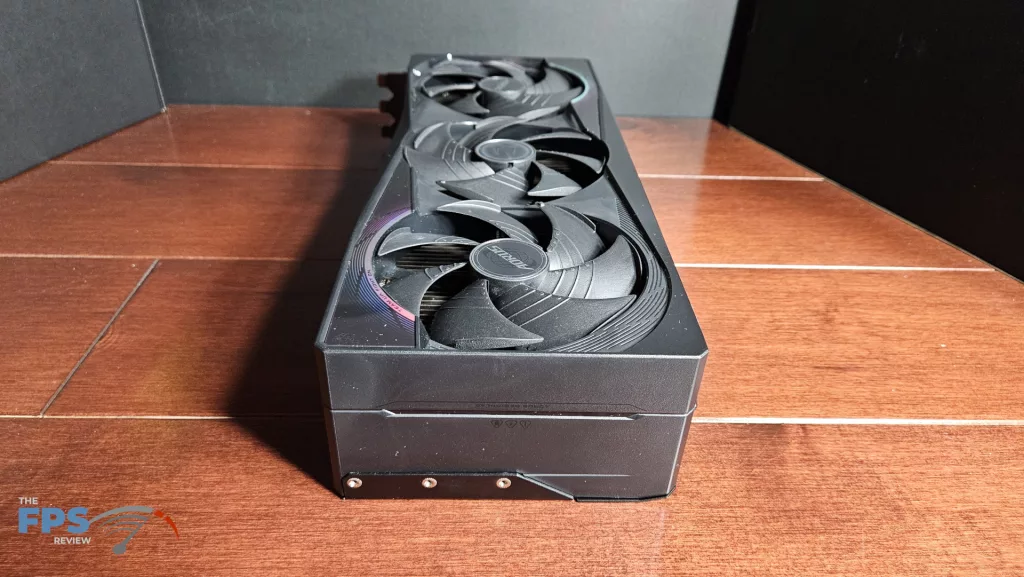
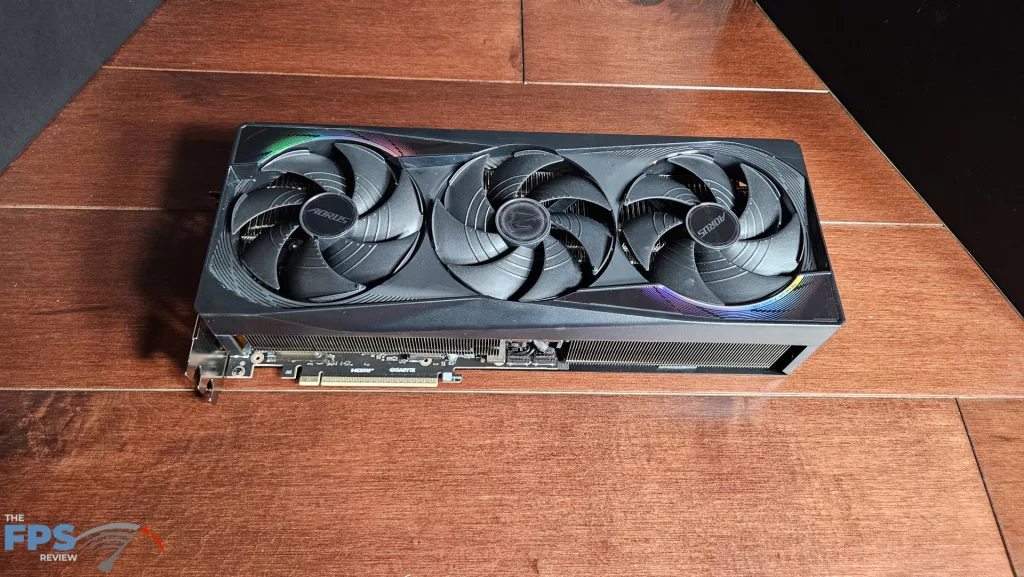
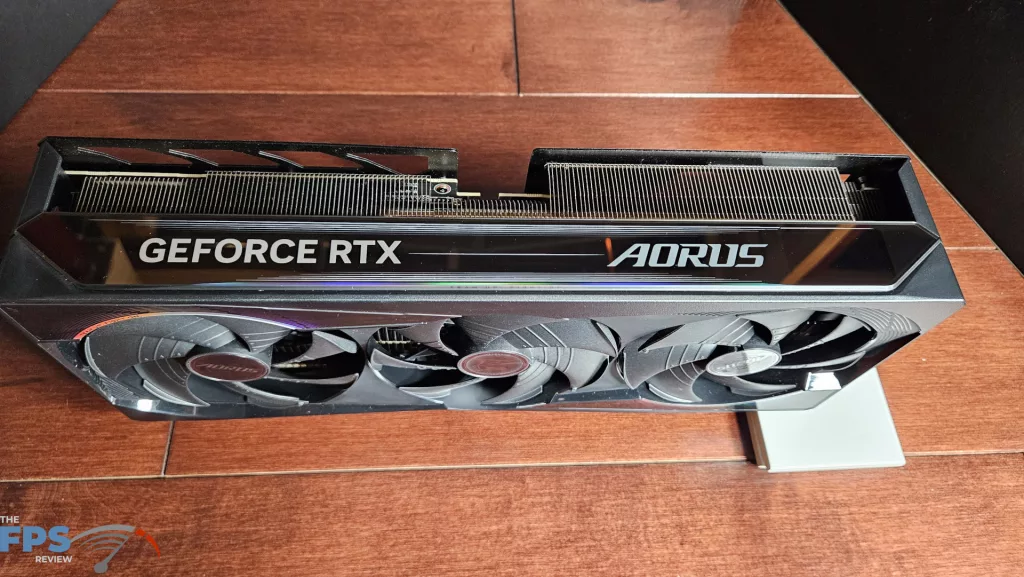
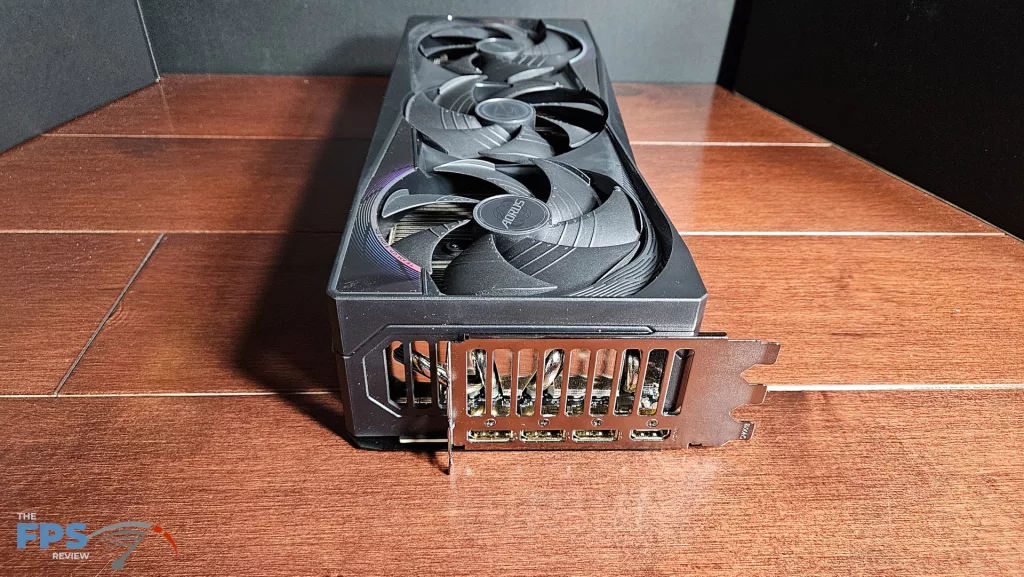
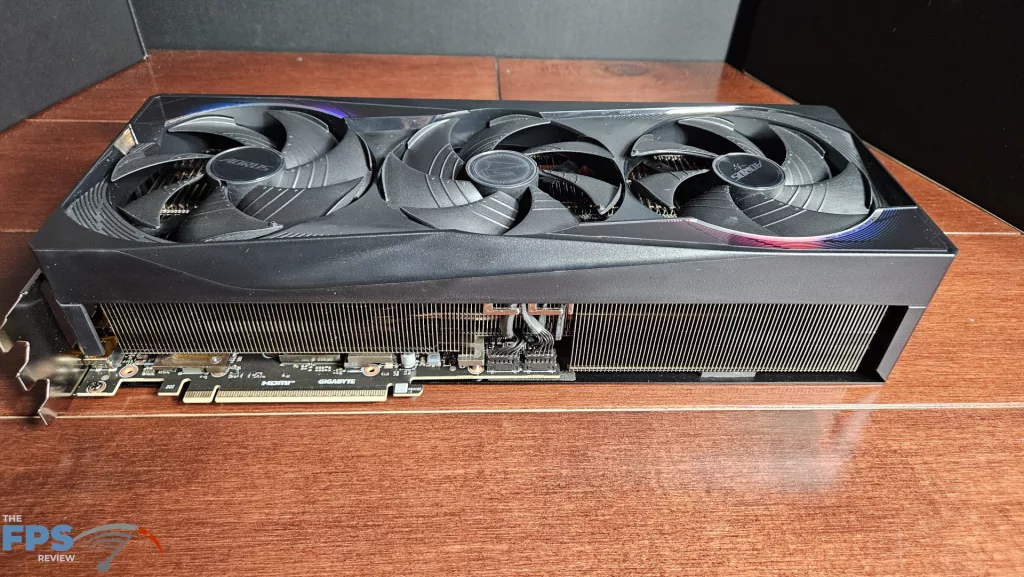
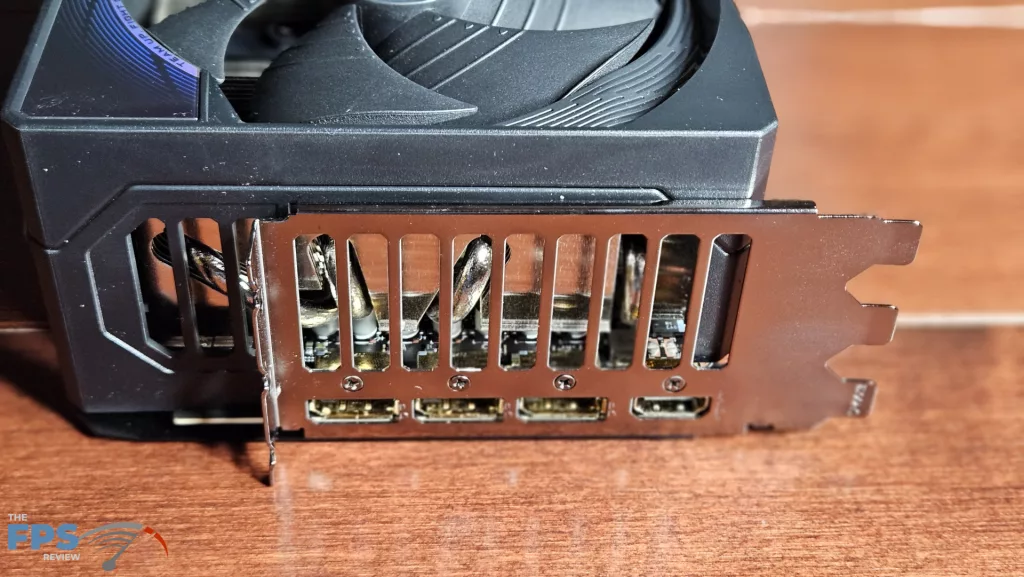
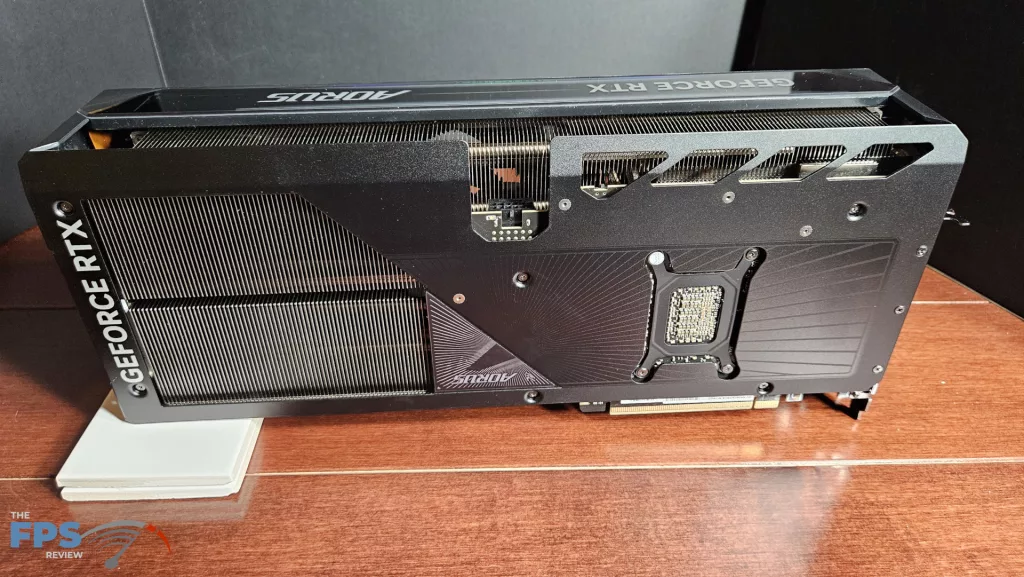
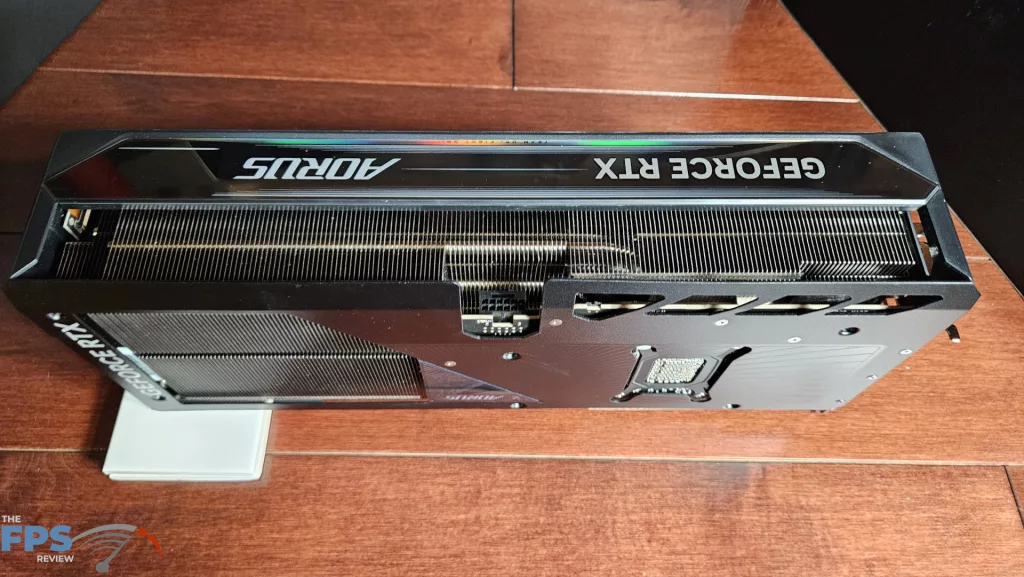
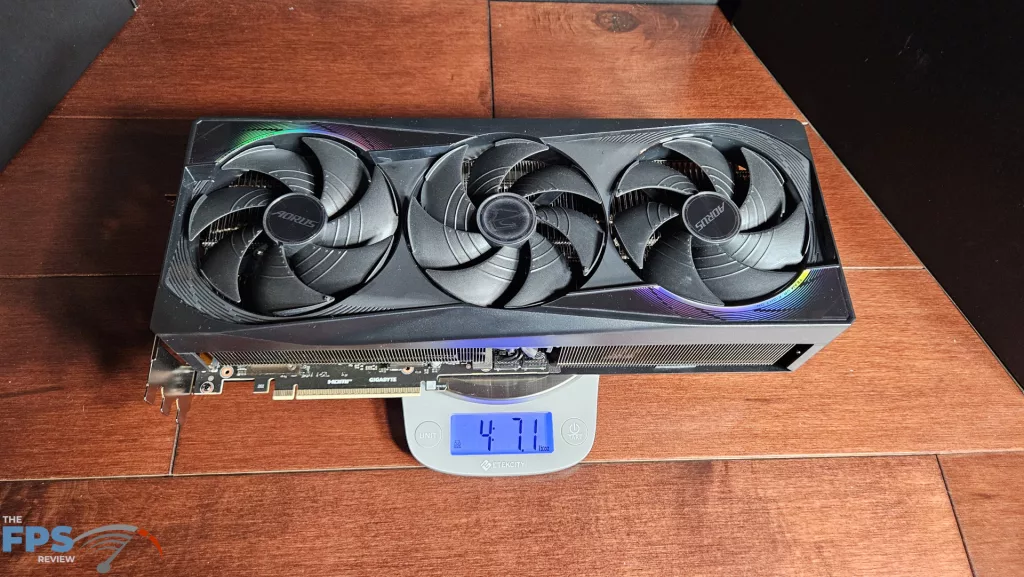
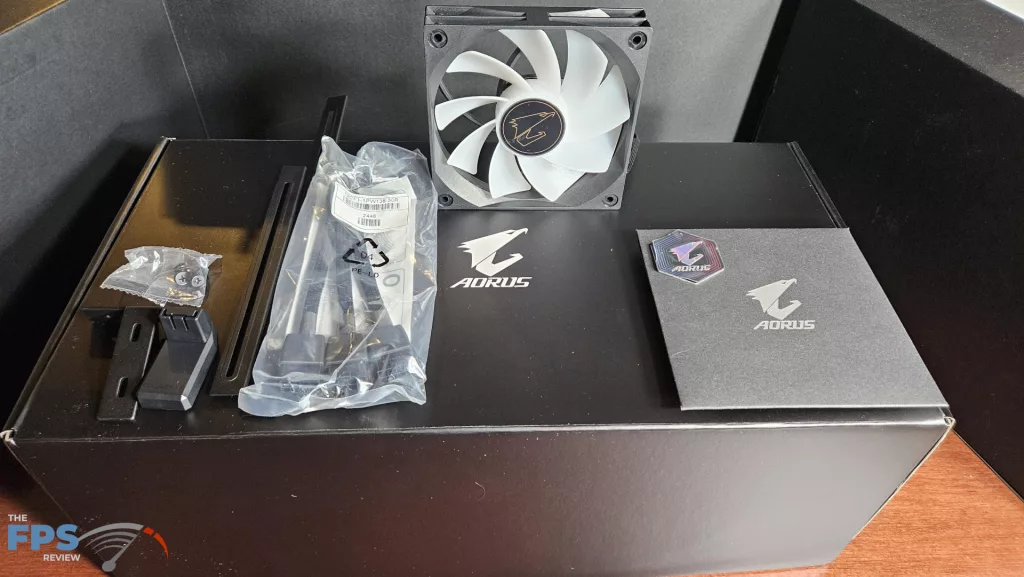
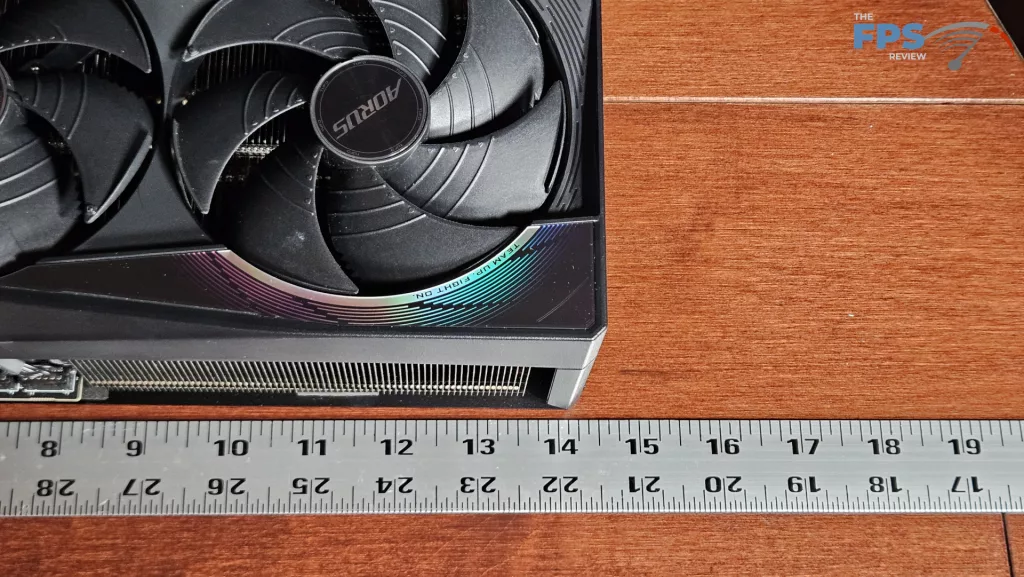
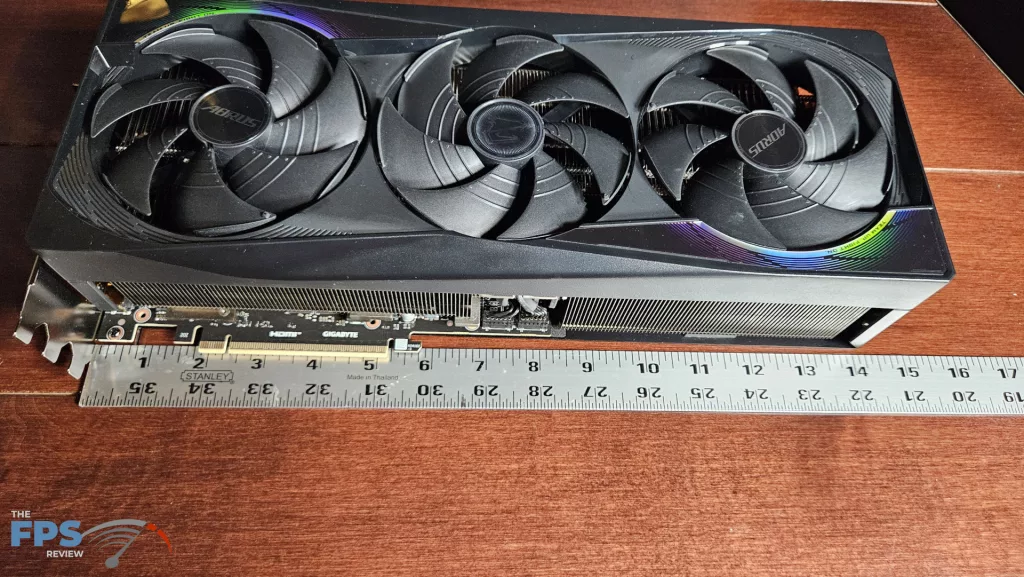
Did we mention this is a big video card? Physically, the GIGABYTE AORUS GeForce RTX 5080 MASTER is 14 1/4 X 5 1/2 x 3 inches in size. It tips the scales at 4.5 pounds. This is a 3.5 slot video card. Do make sure you have room in your case. The I/O has three DisplayPort 2.1b ports and one HDMI 2.1b port. GIGABYTE recommends a minimum 850W PSU for a TGP listed as 360 Watts.
Lastly, there are the RGBs. The GIGABYTE AORUS GeForce RTX 5080 MASTER does have the RGBs indeed. The fans are surrounded by a halo effect, which can be adjusted to be pretty flashy if you like that sort of thing. There is also a small triangular logo RGB on the backplate, which is nicely subtle.
The most interesting addition to the MASTER is a 40 x 20mm programmable LCD screen on the far right edge. You can run a default animation, various performance measurements, custom .GIF, or your own custom text in your choice of colors. All of this is controlled through the GIGABYTE Control Center software available on the video card support page. The only thing we thought would be a nice addition is lighting up the entire edge the LCD screen is on. Currently, the facing edge only lights the word “AORUS” and the LCD screen, while the script GeForce RTX sits in the dark on the left-hand side.
